- You are here:
- Countries & Parks
- Zambia Travel Guide
- Best Time To Visit
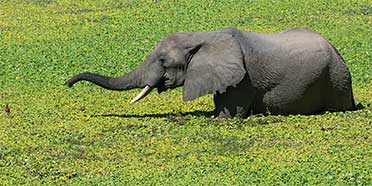

Zambia Travel Guide Zambia
- Parks & Reserves
- Weather & Climate
- Popular Routes
- Getting There
- Malaria & Vaccinations
Best Time To Visit – Zambia

Philip has traveled through Zambia several times and is the author of more than 20 guidebooks to various African destinations.
Philip is the Zambia expert for SafariBookings and author of more than 20 guidebooks to Africa.
Philip is our Zambia expert and author of more than 20 guidebooks to Africa.
You’ll see lots of wildlife in Zambia during the middle and end of the Dry season (May to October). This will fit in nicely with a visit to Victoria Falls, which is at its best from June to August. A Wet season safari (November to April) is much more challenging, as most parks and camps shut down because of heavy rain. The exception is the Mfuwe section of South Luangwa National Park, which has a small circuit of all-weather roads.
May to October – Dry Season – Winter
- Animals are easier to spot
- There’s hardly any rain, and there are fewer mosquitoes
- June through August is the best time to see Victoria Falls
- October gets very hot, especially in South Luangwa and Lower Zambezi
- Morning game drives in winter are chilly, so bring warm clothing
Wildlife Photos

November to April – Wet Season – Summer
- The landscape is green
- January and February are good months to see Victoria Falls
- You can see newborn animals
- This is the best time for birding, with migrants present
- The rain mostly falls as short showers in the late afternoon
- It’s low season, which means lower rates
- Most parks and camps close down – but South Luangwa remains open
- Animals are harder to find because they no longer rely on rivers and waterholes to drink
- From October to December, Victoria Falls might just be a trickle on the Zambian side

Best Time To Go by Major Park
For the best wildlife viewing in the main parks (South Luangwa, Kafue and Lower Zambezi), visit in the dry winter months (July to October). This coincides with the best opportunities for great photos of Victoria Falls – from June to August. Most camps close in the rainy season and washed-out roads make travel difficult. However, the landscape is beautiful and bird watching is superb at this time.
- Kafue National Park Kafue National Park Poor "> Jan J Poor "> Feb F Poor "> Mar M Fair "> Apr A Good "> May M Good "> Jun J Excellent "> Jul J Excellent "> Aug A Excellent "> Sep S Excellent "> Oct O Good "> Nov N Poor "> Dec D
- Lower Zambezi NP Lower Zambezi National Park Poor "> Jan J Poor "> Feb F Poor "> Mar M Fair "> Apr A Good "> May M Good "> Jun J Excellent "> Jul J Excellent "> Aug A Excellent "> Sep S Excellent "> Oct O Good "> Nov N Poor "> Dec D
- South Luangwa NP South Luangwa National Park Poor "> Jan J Poor "> Feb F Poor "> Mar M Fair "> Apr A Good "> May M Good "> Jun J Excellent "> Jul J Excellent "> Aug A Excellent "> Sep S Good "> Oct O Good "> Nov N Poor "> Dec D
Want To Visit Zambia?
161 Zambia Safaris
- Zambia Budget Safaris
- Zambia Luxury Safaris
- Zambia Honeymoon Safaris
- Tour Operators for Zambia
Safari Tours to Zambia

11-Day Best of Zambia's Wildlife Safari
$11,697 to $15,367 pp (USD)
Zambia & Eswatini: Private tour Luxury Tented Camp & Bush Camp
You Visit: Lusaka (Start) , South Luangwa NP, Kafue NP, Lusaka (End)
Wayfairer Travel
4.9 /5 – 149 Reviews

15-Day Off the Beaten Path Zambia Safari
$15,340 to $19,181 pp (USD)
Zambia: Private tour Mid-range Lodge & Bush Camp
You Visit: Lusaka (Start) , South Luangwa NP, North Luangwa NP, Lower Zambezi NP, Victoria Falls, Livingstone (End)

12-Day Family Holiday to Zambia: Safari & Victoria Falls
$7,600 to $8,600 pp (USD)
Zambia: Private tour Luxury Lodge & Tented Camp
You Visit: Lusaka (Start) , South Luangwa NP, Lower Zambezi NP, Victoria Falls, Livingstone (End)

Zambia travel tips: What you should know before you visit Zambia
We are proud members of the U.S. Peace Corps community and love to partner with our fellow Peace Corps Volunteers, who often have some of the best insights into the culture and authentic travel experiences available in their host country. We asked Lianne Bronzo, a recent Volunteer in Zambia, to share her expertise on travel in Zambia.
Africa is a massive continent hosting a great deal of diversity in terms of people, cultures, and landscapes. Then within each country is even more diversity and uniqueness. Zambia is no exception.
What is it like to travel in Zambia?
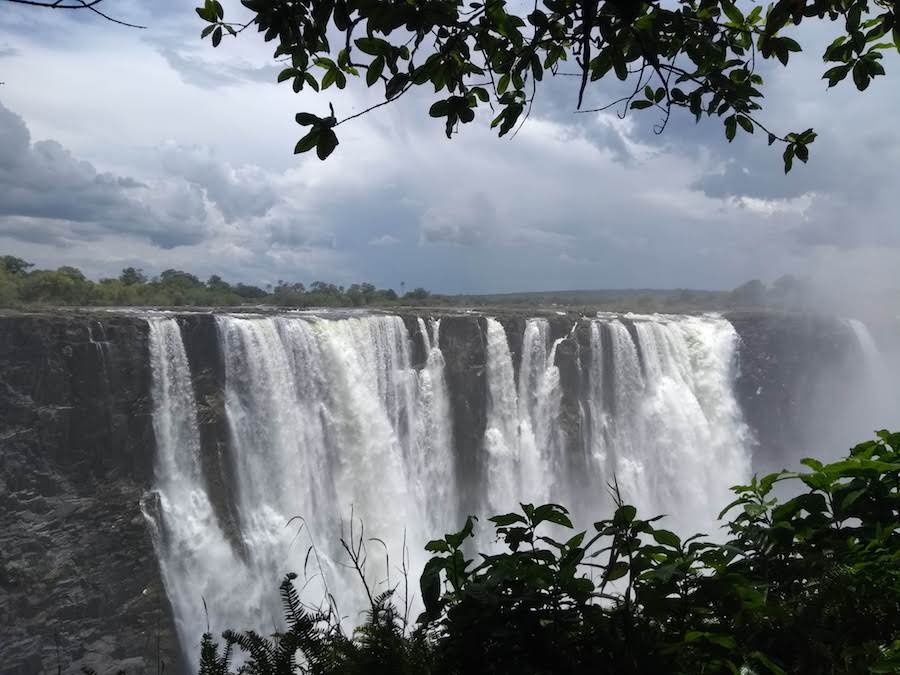
While the most famous landmark is Mosi-o-tunya (the smoke that thunders), most commonly referred to as Victoria Falls , there’s a plethora of pure beauty hidden in pockets spanning the country.
Zambia is about the size of Texas, but traveling between destinations can take much longer due to the road networks and conditions, but that means less construction and more natural landscapes. So even with the logistical challenges, those that choose to venture here will be rewarded with unique scenery and exciting wildlife among little to no tourist crowds.
Although there aren’t any beaches in the landlocked country, Zambia is drowning with rivers, lakes, waterfalls, and even a few natural hot springs.
Perhaps the best part about living in Zambia for the past two years has been getting to know some of the warmest people I’ve truly ever met. People are quick to smile and have taught me so much in terms of hard work, patience, and resilience. I must admit that Zambia is the most difficult place I’ve ever traveled due to the vast distances alone, but it is grossly underrated as a travel destination.
Zambia’s Highlights
Wildlife: Zambia is home to the all of the Big Five, in addition to an abundance of other majestic animals such as wild dogs. Some of the best places for wildlife viewing are South and North Luangwa National Parks , Lower Zambezi National Park , Kasanka National Park (specifically to experience the largest mammal migration in the world!), and Kafue National Park . One may find the safari costs and crowds much smaller than neighboring Tanzania.
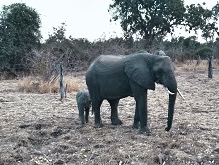
Water: Lake Tanganikya, Lake Bangweulu, and Lake Kariba are some of the large bodies of water suitable for swimming, fishing, boat rides, or just lazing at the beach. The Zambezi River is also a popular spot for water activities.
If you’re itching to chase more than one waterfall, Northern Zambia has got plenty. Kundalila, Chishimba, Kalambo, Kabweluma, and Lumangwe are a few noteworthy waterfalls , but there are plenty more in the watery north. Ngonye Falls is another impressive site with falls spanning 1km in Western Province. Getting to these waterfalls can be tricky as there is little public transport, so hitchhiking, hiring a private taxi, bicycling, or self-driving are the only options. You will be rewarded for these efforts by likely being the only people there to swim in the delightful falls! Most of these places have basic camp sites as well.
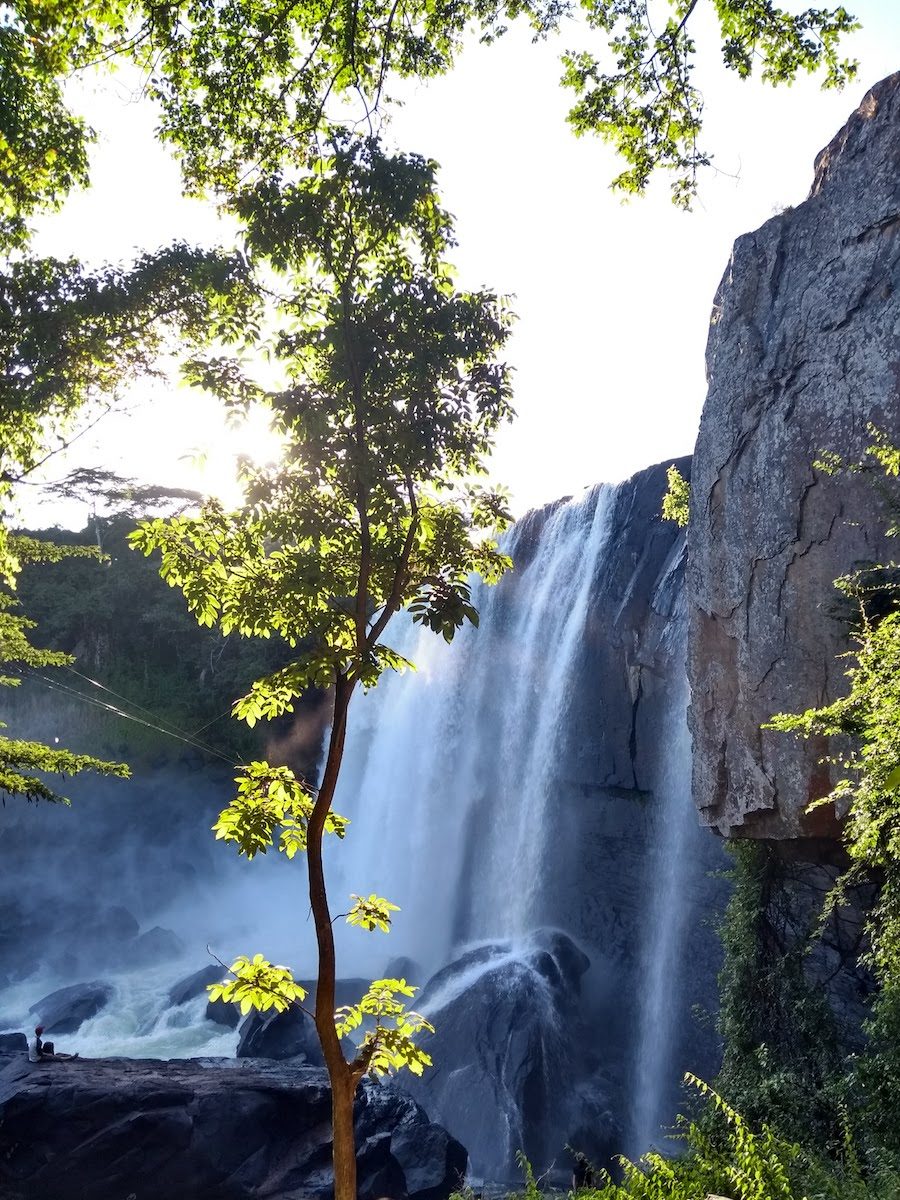
Culture: 73 languages are spoken in Zambia and they all come with their own cultures and traditions. Some tribes have annual festivals such as the Bemba festival (Ukusefya pa Ngwena) and Lozi Kuomboka ceremony. Check out the Zambia Tourism website for details.
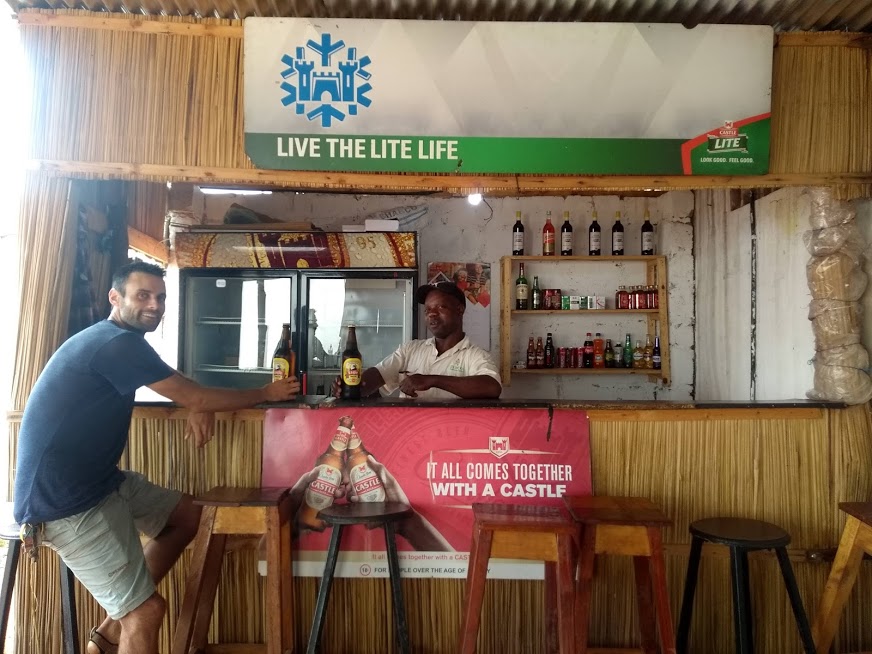
Where to Stay in Zambia
These are some of the best places to stay, recommended by Peace Corps Volunteers, around Zambia:
Where to stay in South Luangwa National Park: Marula Lodge – Affordable accommodations with a friendly staff and discounts for Peace Corps Volunteers!
Where to stay in Lusaka, Zambia: Lusaka Backpackers and Natwanga Backpakers are the most popular places for Peace Corps volunteers.
Where to stay in Livingstone, Zambia: Many of the backpacker places are more or less the same. Cafe Zambezi, Fawlty Towers, Jollyboys Backpackers, and Livingstone Backpackers are the most popular spots.
I recommend Fawlty Towers in Livingstone because they have a nice garden area and pool in the back and offer a free shuttle bus to Victoria Falls.
Where to stay in North Zambia: Lake Chila Lodge is a popular spot for the Mbala volunteers up North. It’s a good stopping point when visiting Lake Tanganikya and Kalombo Falls.
Samfya Marines Beach Lodge is popular amongst volunteers, but may be a bit on the expensive side. It has as private beach.
If you must stop in Nakonde , I recommend Muchinga Exquisite Lodge for a safe and cheap place. I don’t recommend Nakonde at all, but some people stop over en route to Tanzania if traveling by land and not the train.
Practical Zambia Travel Information
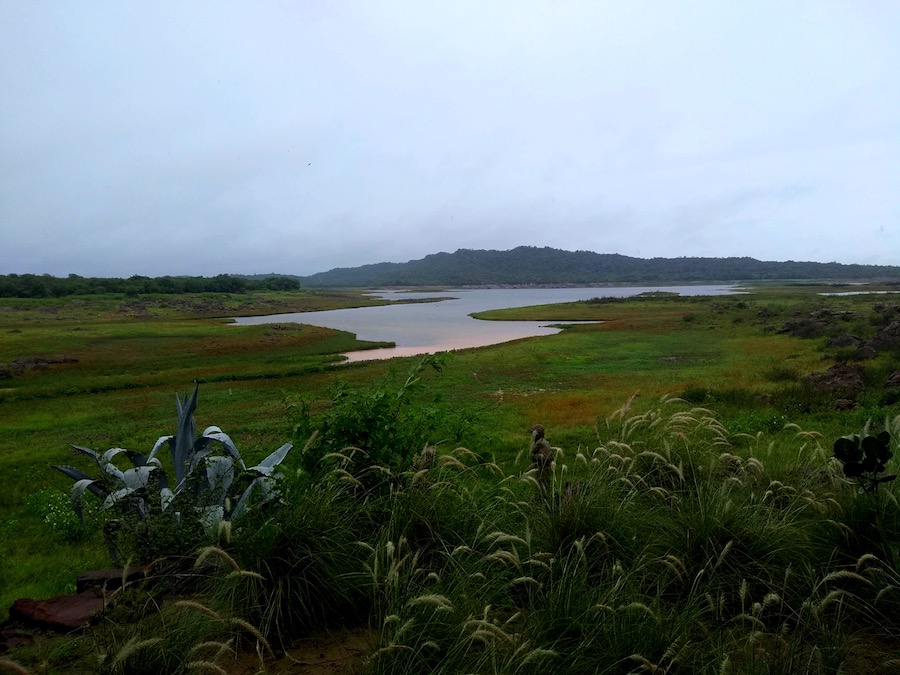
When to visit Zambia
May – July: Cool dry season. You won’t see a drop of rain, but it can get quite chilly at night in Lusaka. August – October: Hot dry season. Fields burn to prepare for planting season to add more to the heat. October is especially brutal, though the dry season is a good time for wildlife viewing. Victoria Falls may not be as powerful toward the end of the dry season. November: First half is dry and then the rains trickle in toward the end of the month, depending on the region (the north is wetter than the south). This is the best time to view the bat migration at Kasanka National Park. December – April: Rainy season. Vibrant green landscapes and mangoes litter the ground, though wildlife is more difficult to spot. Some unpaved roads become impassable during heavy rains.
Costs in Zambia
Like most destinations, budgets can vary wildly. Barebone backpackers can survive on as little as $30 USD per day but the sky is the limit for those seeking luxurious experiences. Most people will find a suitable budget to meet their comfort levels.
Average costs as of March 2020: A bottle of local beer: K10 ($0.66 USD) A filling Zambian meal of nshima (thick maize porridge), fish, and vegetables: K25-50 ($1.60 – $3.20 USD) A western meal: K60-150 ($4 USD – $10 USD) A bed in a dorm room: From K100 ($6.60 USD) A double bed in a very basic lodge: From K150 ($9.95 USD) A comfortable private room in a nicer lodge: From K300 ($19.90 USD) A bus from Livingstone to Lusaka: From K200 ($13.27 USD) but constantly changing due to gas prices
Communication: Cell phones in Zambia
If you have an unlocked phone, it’s easy to get a SIM card for less than a dollar, though you will need to show your passport. From there, you can buy Talk Time to add money for purchasing minutes and data at affordable prices. 4G is available in cities, but the network is spotty otherwise. Airtel and MTN are the two main providers. WiFi isn’t very common.
Getting Around Zambia
Transport will be a large chunk of your budget as well as time spent in the country. But remember that it’s all part of the journey and worth it if you have the time!
Bus: Large “luxury” buses shift people between all major cities with only a few stops, so moderate your fluids intake on long rides! They generally leave on time and it is advisable to purchase tickets at the station the day before. By law, buses are not allowed to operate at night for safety reasons. Gospel music is often played loudly on the bus, so bring some headphones or ear plugs if you are sensitive to loud music.
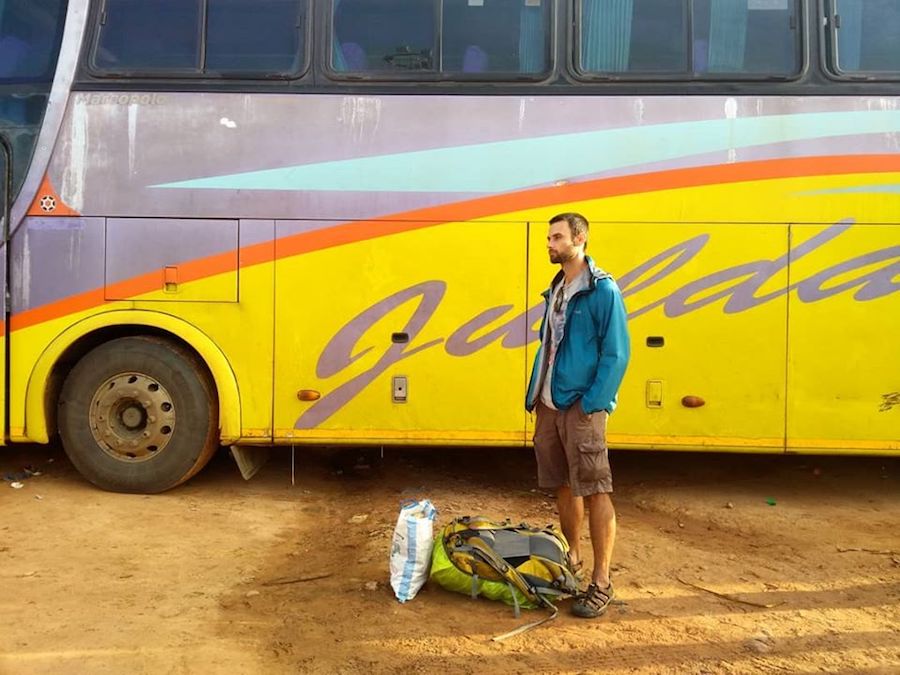
Mini-bus: They only leave when full and make frequent stops along the journey, so this option can be longer and less comfortable than the bus even though the prices are comparable.
Train: There are slow passenger trains from Livingstone to the Copperbelt as well as the TAZARA from Kapiri-mposhi all the way to Dar es Salaam, Tanzania. The trains are notorious for being late, but it is an affordable and safe option for those who have the time and genuinely enjoy train travel.
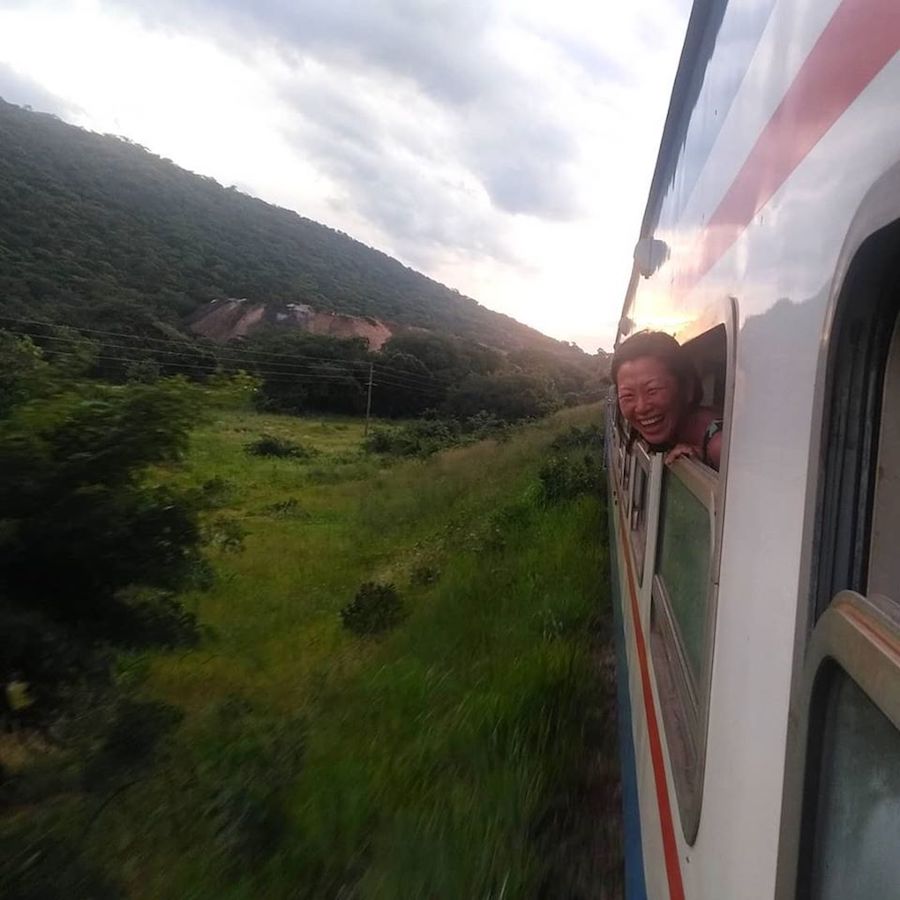
Air: Small planes fly between Lusaka and tourist spots like Livingstone and Mfuwe. It is also possible to charter flights if you’ve got the cash but not the time.
Taxi: Private taxis can be expensive, but cost-effective if split between a group. I recommend using the Ulendo app, which is similar to Uber, when moving within Lusaka.
Self-drive: For freedom and flexibility, rent a car to drive yourself. Some tarmac roads can be laden with potholes and are quite narrow, so it can be intimidating to share the road with semi-trucks. It is not advisable to drive at night. A 4WD is recommended if you plan to veer off the tarmac. Don’t always trust Google maps in terms of travel times – it often will be slower. And remember to drive on the left!
Hitchhiking: I don’t officially recommend hitchhiking, but if you are comfortable doing it and have prior experience, you’ll find it relatively easy and safe hitching in Zambia. Catching lifts is a common form of transportation among locals, especially in areas that lack sufficient public transport. It is standard to pay a fee to the driver, but it is often less than what the bus would cost and significantly more comfortable. Semi-truck drivers are the most likely to give lifts but private vehicles do as well. I’ve met some interesting people while hitchhiking around Zambia. As always, use your best judgment and exercise caution.
Zambia’s Languages
English is one of the official languages and should fare a traveler well in most towns and tourist places in Zambia. However, there are 73 local languages and cultures throughout the country. People generally appreciate it when a foreigner tries to speak the local language, but it can also be insulting to come at somebody using a language that they don’t speak.
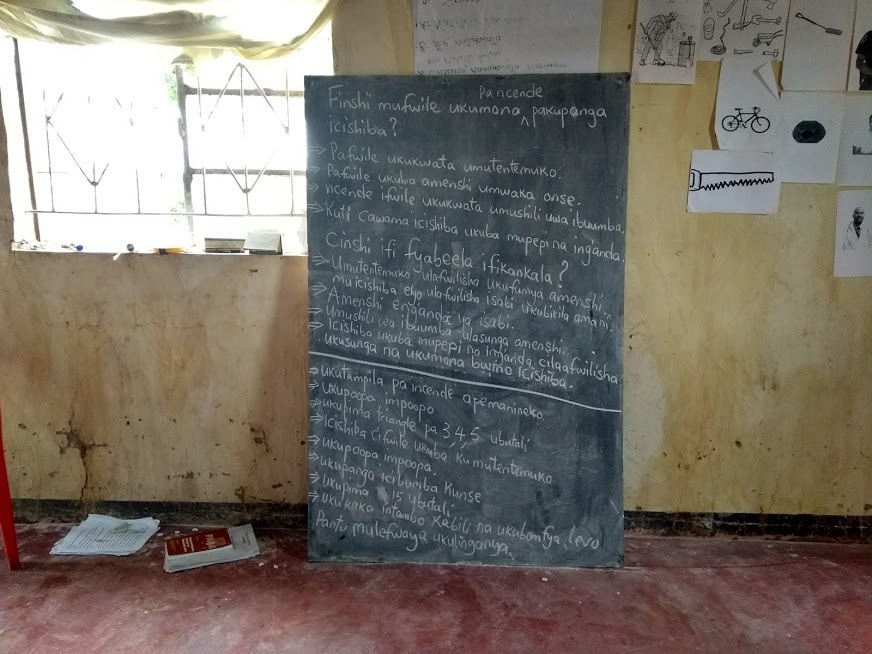
Here’s a general breakdown of the most popular languages in the regions that should be safe to use, but again, there is so much variation even within these provinces.
Lusaka: English, Nyanja. Honestly a little of everything! Southern Province: Tonga Western Province: Lozi Eastern Province: Nyanja Central, Luapula, Muchinga, Northern, and Copperbelt Provinces: Bemba Northwestern Province: Kaonde
Cultural things to know and travel etiquette in Zambia
Cultures vary greatly between tribes, but here are a few general tips that are useful for visitors to know:
– Traditionally, greetings are of utmost importance. When you pass someone in the rural area, acknowledge each other’s presence with a greeting. This isn’t practiced so much in towns, but it’s still important to say hello and how are you before getting right down to business.
– Both men and women should wear long skirts or pants as thighs are sexualized body parts.
– Zambia is a Christian nation, so transport can be trickier on Sundays and some businesses may be closed.
– Eat and shake hands with your right hand only.
– Tipping is not expected but always appreciated.
– If somebody calls you fat, it is a compliment, so try with all of your soul not to feel bad about it. I am a small Asian girl and got called fat on several occasions, though by people I know and not just strangers.
– Be mindful about taking photos of people. First, ask yourself what the purpose of the photo is, if you would take such a photo of a random person in your home country, and what will be done with that photo. Ensure you ask for consent.
Is Zambia safe for travelers?
Zambia is generally peaceful and a very safe place to be. Like anywhere, always exercise caution, especially in towns at nighttime. Try to avoid walking alone at night. Take trusted taxi drivers. Don’t flash around your valuables. You know, basic safety stuff you’d do at home!
It is pretty safe for a woman to travel solo in Zambia, but cat calling and harassment are not uncommon in busy areas. I sometimes feel uncomfortable being squished amongst men in public transport, so opt to sit in the front near the driver if possible. Befriending a woman nearby not only helps alleviate the situation if someone is bothering you, but Zambian women are generally strong and cool to get to know!
Homosexuality is illegal in Zambia unfortunately. LGBT travelers may find it difficult to have to hide their identity. Since I cannot speak to the experiences of LGBT individuals, I asked a friend what his advice would be for queer travelers in Zambia. He advised to avoid public displays of affection (this goes for hetero couples as well). If you want to be extra cautious, disable dating apps. He also mentioned that nose rings may be a signal for homosexuality, so taking it out may be a good idea, particularly if you are male-identifying.
Staying Healthy
I am not a doctor trained to give health advice, but it is a good idea to do your research and perhaps see a travel doctor before coming to the region. Some concerns travelers may encounter are malaria, tuberculosis, Bilharzia, giardia, and traveler’s diarrhea.
Some medications can be found locally and are cheaper here than your home country. Prevention is key! Opt to stay at places that have bed nets, drink clean water, and keep a small medical kit with a thermometer and malaria test kit. Oral rehydration solution packets can also be handy.
*Take 10% off any travel-size bug spray at rangerready.com with code IntentionalTravelers10 >

General Zambia Travel Tips
– Always travel with toilet paper, hand sanitizer, and small change. Sometimes it can be difficult to break 100 kwacha bills.
– Look out for citenge material or traditional fabric. You can get clothes and accessories tailored affordably. Makes for a great souvenir or gift!
– When at produce markets, it is standard to ask for a “top up” if you buy a lot of things. Just say “mbasela?” and the vendor may laugh and throw in an extra banana.
– You must pay for plastic bags at many supermarkets, so that’s another incentive to carry around a reusable bag!
– Download the iOverlander app for information about landmarks and accommodation. It’s helpful even if you are not driving in the region.
– Join the Mzungu group chats to connect with fellow travelers in the region.
– If you haven’t already, educate yourself about the white savior complex and poverty porn and keep these in mind if you are seeking to volunteer or go on “village tours” in the region.
Mwaiseni ku Zambia! Welcome to Zambia.
✈️ Protect your Zambia trip with Travel Insurance – We’ve started using Nomad Insurance by Safety Wing for affordable evacuation, international medical, and trip coverage.
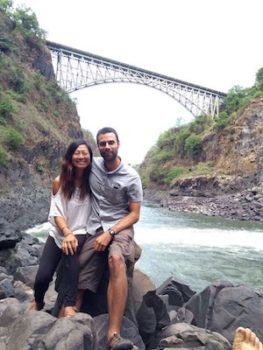
You might also like:
– 6 Places You Must Visit in Malawi – Off the Beaten Path Small Town Digital Nomad Destinations – A Quick Guide to Couchsurfing – 5 Selfish Benefits of Peace Corps
Like this post? Pin it for later or share with friends!
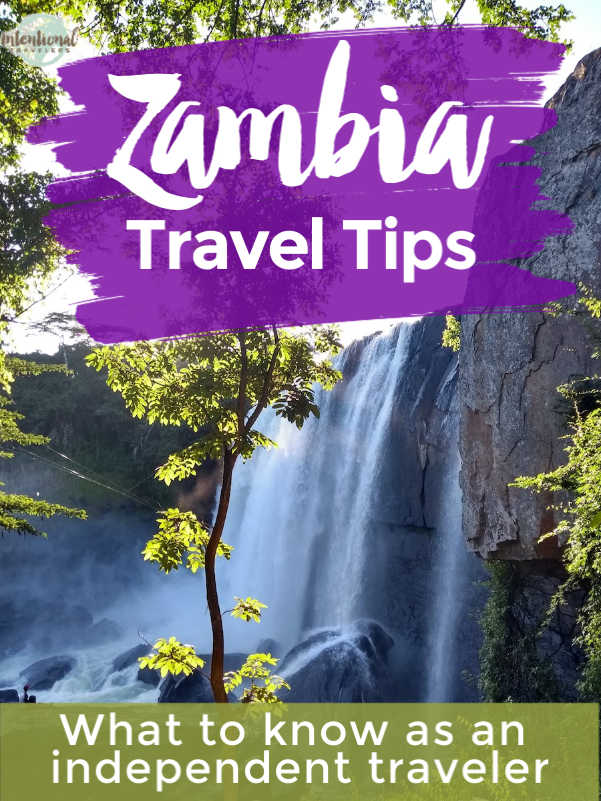
Similar Posts
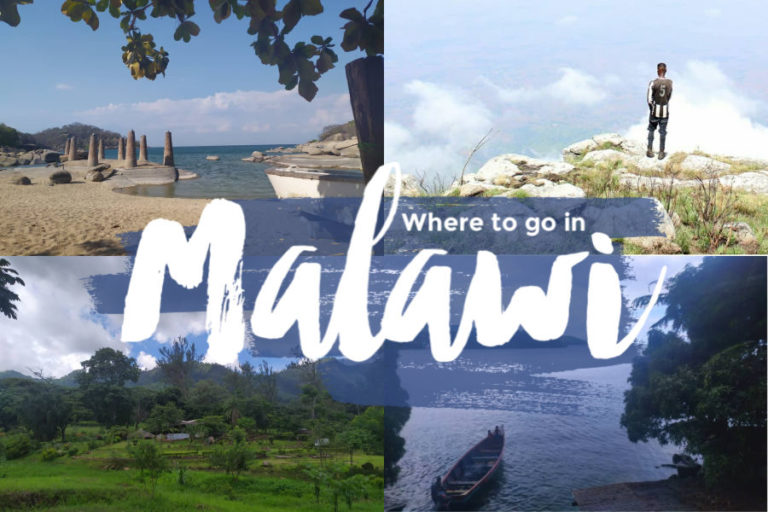
6 Places You Must Visit in Malawi
We are proud members of the U.S. Peace Corps community and love to partner with our fellow Peace Corps Volunteers, who often have some of the best insights into the culture and authentic travel experiences available in their host country. We asked Madisen Hughes, a former Volunteer and current resident in Malawi, to share her…
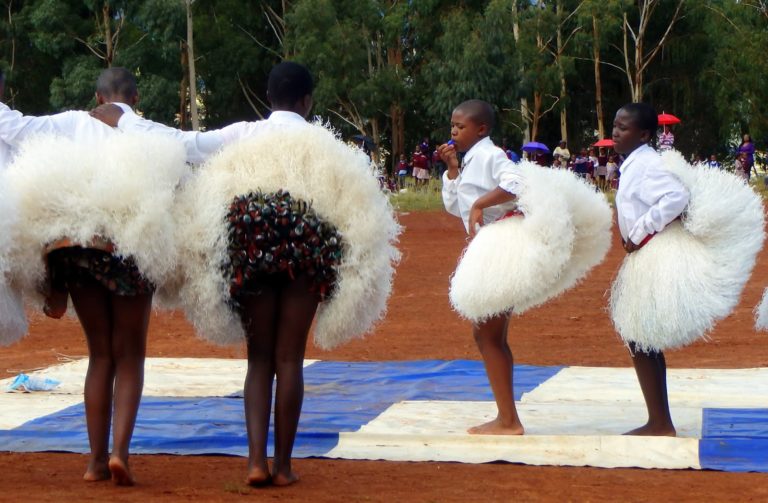
5 Lessons We Can Learn From Basotho Women
When we were Peace Corps Volunteers, our appreciation of cross-cultural exchange really grew. In fact, we’re taking on a new passion project related to better understanding others around the world (more on that soon!). In an effort to promote cross-cultural understanding through our blog, we’re periodically sharing posts from our fellow intentional travelers who have…
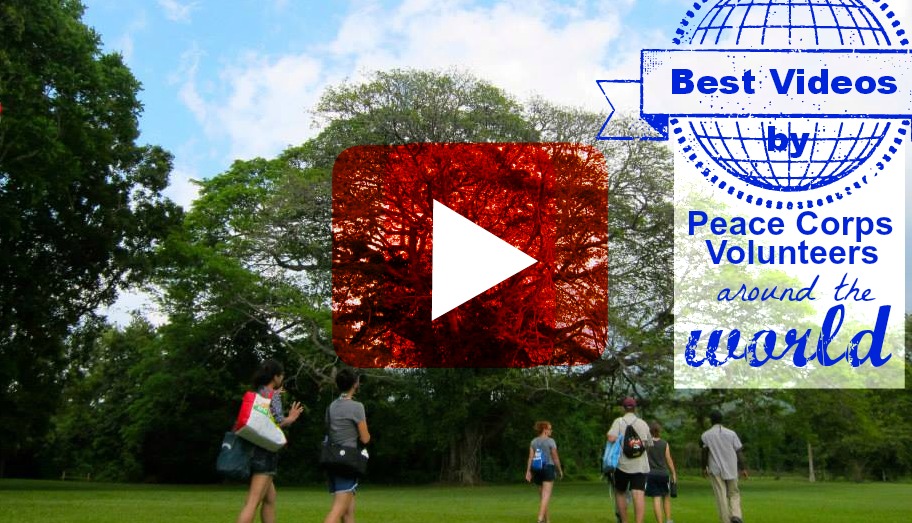
Best Videos by Peace Corps Volunteers Around the World
For decades, dedicated Peace Corps volunteers have ventured to all corners of the globe, bringing their passion, skills, and care to communities in need. Beyond their invaluable on-ground efforts, some volunteers have also captured their experiences in vivid detail, offering us a glimpse into the diverse cultures, challenges, and triumphs they encounter. As Returned Peace…
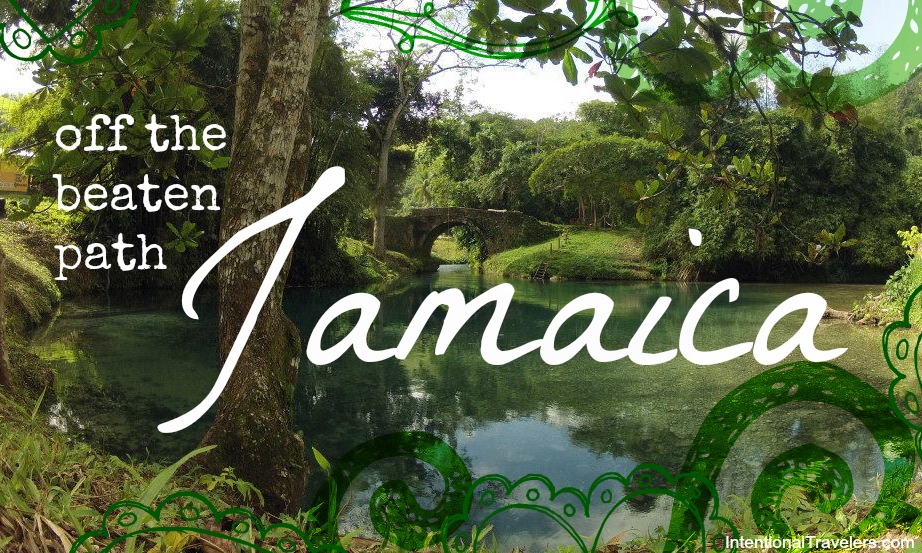
Favorite Places to Visit in Jamaica: Off the Beaten Path
Having lived and served as Peace Corps Volunteers for over two years in Jamaica, we’ve had the opportunity to explore a fair amount of the island. Our experiences ranged from weekend trips on our limited PC budget to the more indulgent vacation days shared with our visiting family and friends. With a strong Volunteer network…
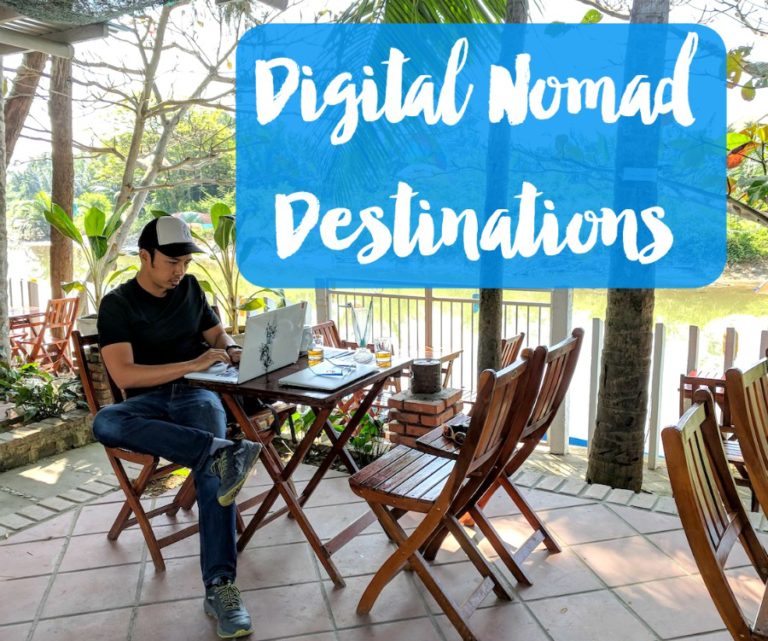
Off-the-beaten-path Small Town Digital Nomad Destinations
If you’re like us, finding the best small town destinations and off-the-beaten-path gems is a big reason why we love working remotely. Since becoming digital nomads in 2014 and trying out various places to live and work abroad, we’ve learned an important lesson: Some of the big “digital nomad hubs” are not really our style….
Zambia is the least place I would consider as a travel destination. However, your post has enlightened me on fun things to do on my visit
ZAMBIA is situated in Central Africa, your headline states east Africa.
Hi and thanks for visiting our blog and taking the time to write. Can you share more specifically where you are seeing that error in our post? I’m not finding it in the title, headings, or anywhere else in our text.
Leave a Reply Cancel reply
Your email address will not be published. Required fields are marked *
This site uses Akismet to reduce spam. Learn how your comment data is processed .
- Deutschland
Best Time To Visit Zambia

An overview of Zambia’s seasons
Zambia country has a sub-tropical climate with pleasant temperatures due to its high altitude. The temperatures average around 68°F in the highlands and around 75°F in the valleys. The cool, dry season, from May to August, is considered the best time to visit Zambia.
Best Time To Visit
We recommend.
- The water flow over the Victoria Falls is high around this time – head here to marvel at the thundering waterfall with spray that can be seen from miles away!
- The wet or green season is an excellent time for birdwatching, so depending on which parks are open during this time, you could head for a spot of birdwatching
- If you are planning to visit Victoria Falls around this time, spend time in the charming city of Livingstone
- View the magnificent Victoria Falls on a helicopter ride!
- This is the start of the fishing season in Zambia, so why not try your hand at catching some fish?
- Head to the remote Luambe National Park, which is rich in biodiversity
- This is the ideal time to visit Bangweulu to try and spot the rare shoebill stork
- Explore the wilderness that is South Luangwa National Park on a walking safaris
- Relax with a river cruise on the Zambezi followed by a luxurious stay on a private island on the river
- Explore the extensive landscapes, and encounter wildlife during your safari in Kafue National Park
- With the flow of the Zambezi river decreasing, August is a good month to go white-water rafting on the Zambezi!
- Embark on a walking safari in the remote North Luangwa
- Marvel at the colorful southern-carmine bee-eaters that swarm Luangwa River at this time
- Experience exciting wildlife safaris in the Lower Zambezi National Park
- Hike or go horseback riding in Shiwa Ngandu, a beautiful lake surrounded by a hilly countryside
- Head to nearby Chusa Falls for rafting and birdwatching
- December is excellent for birdwatching as the migratory birds return around this time!
Best time to visit Zambia by season
The cool, dry season, from May to August, is considered to be the best travel time for Zambia when temperatures are around 73°F. At night it gets relatively fresh, falling to about 42°F. The rivers and waterholes are filled by the rainy season and attract numerous wild animals. Particularly great animal observations are possible in June and August. Many roads to remote regions are only passable during the cool dry season. During the hot dry season, especially from October, the temperatures and also the humidity increase noticeably.
In mid-November, the rainy season begins, which is also called the Emerald Season or Green Season. During these hot, humid months, the country shines in green. Many remote areas can no longer be visited and some camps close. Nevertheless, this season has its own charm – and is wonderfully suited for bird watching.
The climate in Zambia is determined by three seasons.
Cool drying time: May – August
Hot dry season: September – November
Rainy season: December – April (South) / October – April (North)
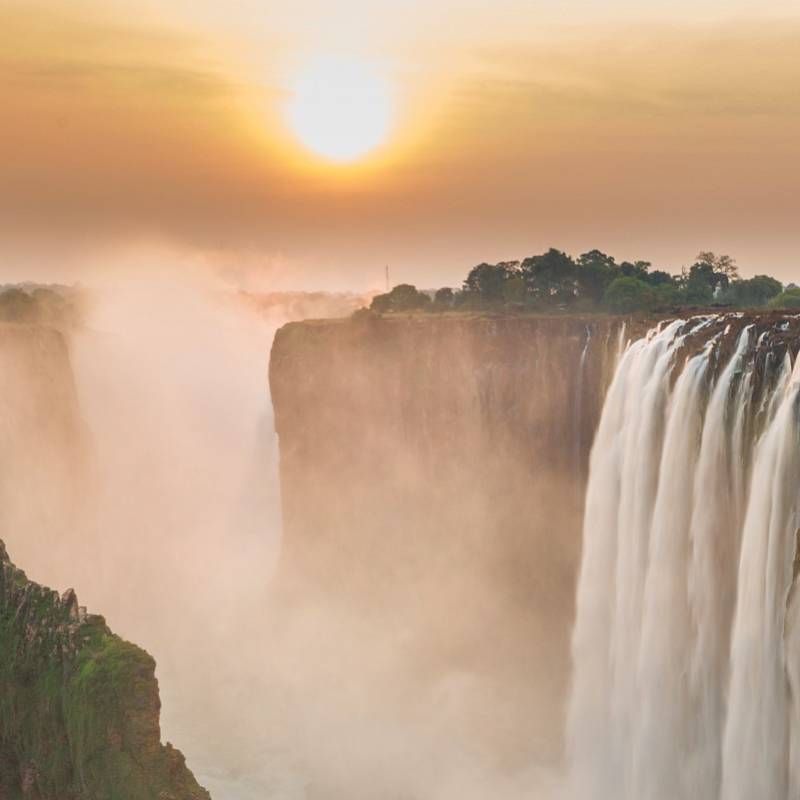
What to Pack for Zambia
The season you travel to Zambia will determine what you need to pack. Based on the time you choose, here is a list of things you should ideally carry: Rain gear including waterproof jacket and shoes, mosquito repellent especially during the rainy season, light clothes for day time and a jacket for cooler evenings, layers of clothing including warm jacket / fleece or jumper, gloves, socks and a scarf, light cotton or linen clothing with natural colors, light shoes and sandals, sun hat, sunscreen, sunglasses, swimsuit, light jumper for cooler evenings, long sleeved shirts and long trousers are useful for protection from the sun during the day and mosquitoes at night.
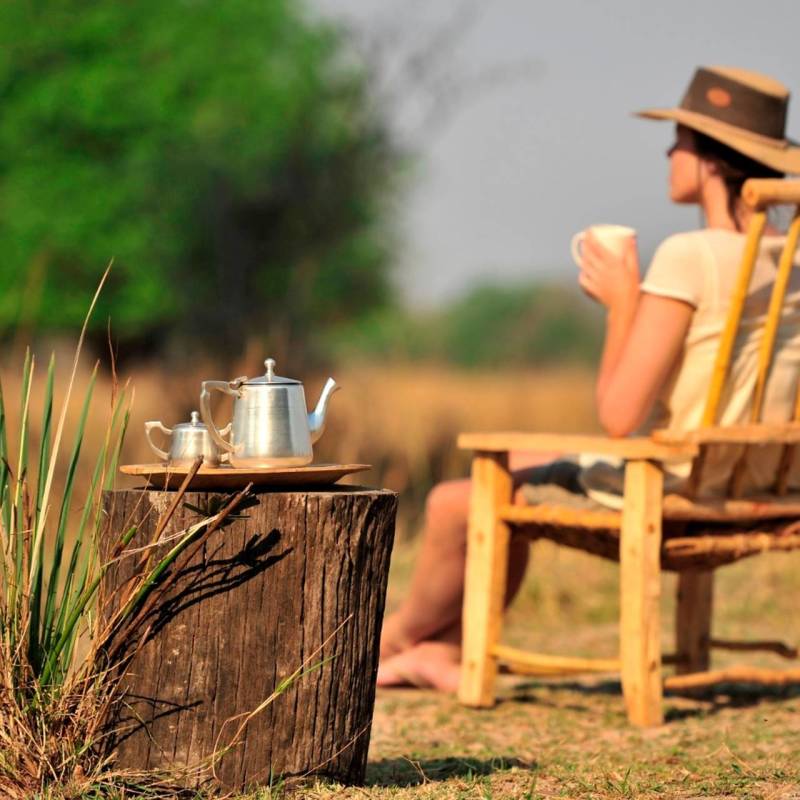
Popular Trips to Zambia
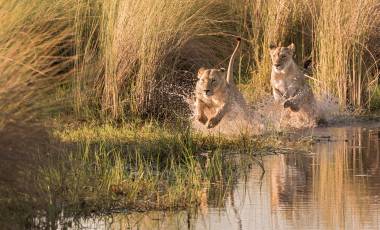
Tanzania, Botswana & Zambia: From Kilimanjaro to the Falls
This is the quintessential African safari vacation. The 15-day tour takes you across some of the continent’s best game reserves in Botswana, Tanzania and Zambia. Buckle up as you set out on the safari journey of your dreams, with stops at Arusha, Ngorongoro Plains, Northern Serengeti, Chobe National Park, Okavango Delta and more. Bask in…
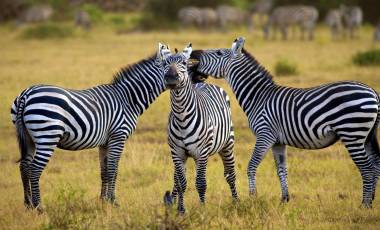
Tanzania, Kenya and Zambia: Safari and Waterfalls
Few things are as awe-inspiring as gazing at the majestic Victoria Falls or witnessing nocturnal life in the Masai Mara. You can experience all that and more on this 12-day tour of Tanzania, Kenya and Zambia. From natural wonders to diverse wildlife and rich culture, this all-encompassing vacation is sure to leave you spellbound. Watch…
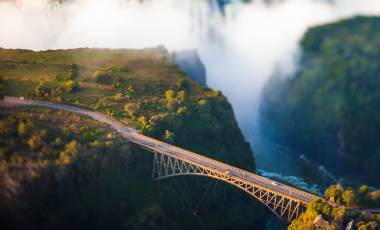
Botswana: Spectacular Water Worlds
This Zambia and Botswana trip takes you to the most spectacular water worlds in Africa. Start with Victoria Falls, which plummet for over a kilometer. Admire the falls from multiple viewpoints and then take a walking or biking tour to a nearby village. Continue on to Chobe National Park, where you can go on boat…

Zambia: Victoria Falls and Safari Highlights
Discover an untamed wilderness in Africa’a adventure capital! Enjoy exhilarating adventure sports in Victoria Falls and a variety of aquatic and overland activities amid the floodplains, grasslands and forests of Lower Zambezi National Park. The highlight of your trip is your scintillating walking safaris in South Luangwa – armed with fantastic guides and scouts, experience the…
Best Places To Visit
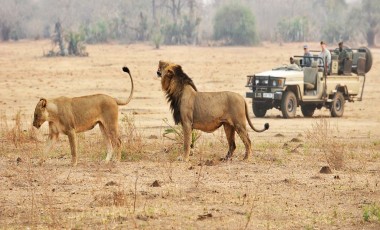
Kafue National Park is a magical wilderness offering excellent game viewing, bird watching and fishing opportunities.
Kafue National Park
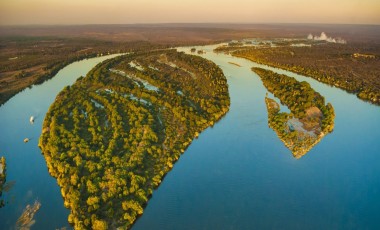
Lower Zambezi National Park lies across the Zambezi River from the historically better known Mana Pools in Zimbabwe.
Lower Zambezi
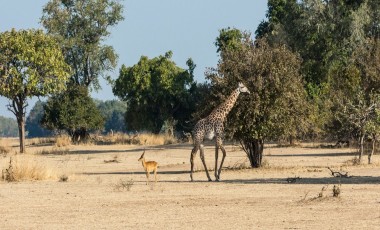
Experience wild walks! South Luangwa National Park is tropical, wild, beautiful and one of the most stunning national parks in Africa.
South Luangwa
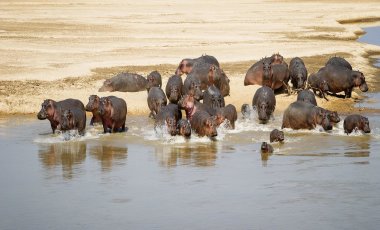
Embrace the remoteness! North Luangwa is a wonderful option for outdoorsy guests who really appreciate the genuine sense of intimacy of the bush experience.
North Luangwa
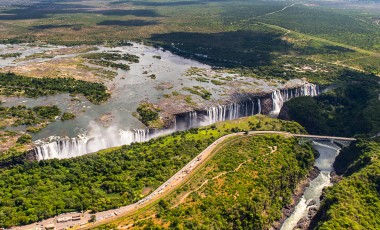
Smoke that thunders! That is what the Kolobo tribe who lived by the Victoria Falls two centuries ago once called this seventh wonder of the world.
Victoria Falls
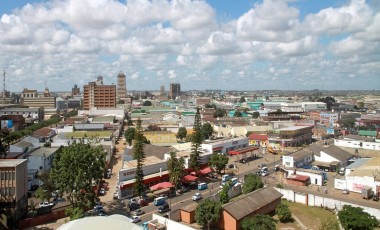
Lusaka is one of the fastest-growing cities in central Africa, with a sprawling downtown area, high-walled suburbs, busy shanty towns, bustling markets and large industrial areas, bringing together people of many nationalities and making it a bustling center for economic, political and cultural activities.
Things To Do
From the stunning Victoria Falls to scintillating wildlife safaris and incredible river cruises – Zambia is waiting to be discovered! Follow to this link for an overview on the top ten attractions, activities and highlights in Zambia.
Travel Guide
Zambia is a relatively non-commercial safari destination, where you can experience intimate little camps in beautiful and remote reserves. Before you travel, discover all essential details, from visas and currency to health information.
From the Blog

Top 10 Exotic Waterfalls You Need To See
Grand cascades, raging torrents, glorious fountains or ferocious rapids – there are few in the world who don’t enjoy waterfalls; and the more magnificent they are, the better!
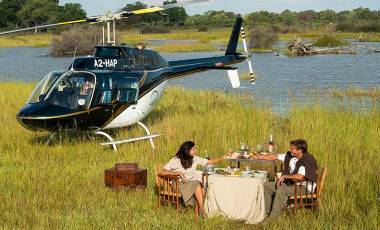
Top 9 Unique Luxury African Safaris for You
Here’s our list of the top 10 wildest and most unusual African vacation ideas across eastern and southern Africa.
What Our Guests Say
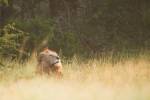
The Enchanting Difference
Authentic & unique.
Our award-winning, licensed local guides provide incredible insights and exclusive experiences for you.
Personalized & Private
Our experts completely customize your private tour to match your interests and preferences.
High-Quality Experiences
All our accommodations and services are personally tested by our team.
Fully Supported Travel
You’ll have a personal and dedicated trip coordinator, backed by 24/7 support in case of emergencies while you’re traveling.
Financial Protection & Flexibility
Your booking is flexible and completely secure with us.
Safe & Secure
Your safety and well-being are our top priorities.
Do you have a vacation in mind? Personalize your itinerary with our Trip Builder.

Best Time to Visit Zambia | Weather, Temperatures & More
Want to know when is the best time to visit Zambia? Use this helpful guide to plan your trip.
Zambia is a beautiful East African country home to a wide variety of fascinating wildlife. Tourists flock yearly to see the thunderous waters of the Victoria Falls or cruise down the Zambezi river.
Although the weather in Zambia is delightful year-round, there are some months when it’s preferable to plan your vacation. This is especially true for certain activities.
Here is a detailed guide on the best time to visit Zambia.
The Best Times in Zambia for a Vacation
The climate of Zambia is divided into two seasons: the wet season, during the summer, and the dry season, or winter. Each season has its advantages and disadvantages. Here’s our breakdown of the weather in Zambia.
The dry season in Zambia is between May and October and, as expected, is also the high tourist season.
During these months, you will likely spot more animals such as lions, elephants, and zebras. With the dry season, the skies are clear, and there’s less risk of being bitten by pesky mosquitoes.
Quick tip: This is Zambia’s winter, and morning game drives are cold. Make sure you pack warm clothing.

Despite the high season, the parks are not too crowded except for Victoria Falls. July is when visitor numbers are at their peak and prices for accommodation hike up.
June is perfect if you want to avoid the crowds or score good deals on hotels or camps. The ground dries up, and temperatures are pleasant.
August is the perfect month to combine a game trip with a visit to Victoria Falls. You can enjoy a walking safari as the bush is easy to navigate. This is also around the time when the temperatures start to rise.
September and October are the best months to go if you want to spot animals. This is when temperatures rise, and animals flock to the rivers for a drink of water. In September, you can expect to see the dazzling colors of the carmine bee-eaters as they head to the riverbanks to build their nests.
In late October, Victoria Falls may not be as spectacular as you expect on the Zambian side. However, you can cross over the Zimbabwean side to see the main falls in all their glory. This is also a fantastic time to dip in the Devil’s Pool on the edge of the falls.

Zambia’s summer and the wet season are from November to April. This is when the landscape is greener and rainfall increases.
Between December and April, Zambia’s parks are a luscious green colour, and the air isn’t dry, which means there’s not much dust. In short, this season is a photographer’s dream.
If you are interested in viewing birdlife, this is the perfect time to visit Zambia. There are also opportunities to catch a glimpse of newborn animals. This is when many herbivores give birth to their young, as it is Zambia’s calving season.
Although this is Zambia’s wet season, the rain mainly falls as short showers in the late afternoon. This means you can enjoy a morning or early afternoon excursion without worrying about getting wet.

Since this is Zambia’s low season, you may find it challenging to find things to do. Zambia’s most popular park, South Luangwa , remains open, but most other parks and bush camps close.
If you want to boat in South Luangwa, you should time your visit for February or March. This is when the bush camps, which are only accessible by water, reopen. Victoria Falls is also in full flow and at its most spectacular during this time.
Warning: The increased water levels during this time means that this is not a good time for white-water rafting.
Another drawback is that animals may be more difficult to find as they no longer need to rely on the big rivers and watering holes for water.
If you’re going to Zambia for the Falls, check out this guide on the best time to visit Victoria Falls .

Average Temperatures in Zambia by Season
The weather in Zambia and Africa is generally pleasant year-round, but some months are better for a vacation, especially if you want to view animals or revel in the beauty of Victoria Falls.
In Zambia’s winter, there’s not much rain, and the humidity is low. This is when animals usually head to the rivers to drink.
- May: This marks the end of summer, and temperatures are cool. They average at 12°C (52°F) in the morning and 25°C (77°F) in the afternoon.
- June, July, and August: Mornings are pretty chilly at 10°C (50°F), with afternoon temperatures reaching 23°C (73°F). Make sure you pack warm clothing for the morning game drives.
- September and October: These months are when the temperatures begin to rise. Daytime in October, the hottest month, reaches temperatures of 31°C (88°F). In the lower-lying parks, the temperatures peak at 40°C (104°F).

During these summer months, Zambia experiences most of its rainfall, and road conditions can get bad.
- November: In this unpredictable month, temperatures average between 18°C (64°F) and 29°C (84°F) throughout the day.
- December, January, February, and March: These are the wettest months in Zambia. You can expect torrential rains in the afternoon with temperatures around 26°C (78°F). The humidity is also high.
- April: The rains begin to ease, and the humidity decreases as summer ends. Daytime temperatures average between 16°C (61°F) and 20°C (86°F).

A Footnote on the Best Time to Visit Zambia
If you are visiting Zambia, time your stay for when it will suit your needs. Some months are better for visiting the Victoria Falls, whereas others are better for game viewing.
The summers can also get quite hot, so that is something to keep in mind when planning your trip. All in all, there isn’t a right or wrong time to visit Zambia. You just need to know what you want out of the vacation. So, book your trip to Zambia today, and prepare for a wild adventure.
Check out this list of Zambia safari lodges to find the perfect place to stay on your trip.

Zambia Safari Lodges | Luxury Stays in the Heart of Africa

Livingstone Zambia Airport | Best Flights, Routes & Attractions

Top 10 Animals in Zambia: Wildlife in Sub-Saharan Africa

Luxury Zambia Safari Holiday | Best Places To Tour
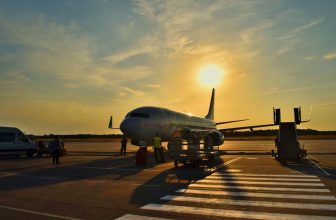
Leave a reply Cancel reply
Save my name, email, and website in this browser for the next time I comment.

Compare items
- Total ( 0 )
Shopping cart
This website uses cookies to ensure you get the best experience on our website. Learn more
- Australian Dollars
- British Pounds
- Canadian Dollars
- New Zealand Dollars
- South African Rands
- Swiss Francs
- U.S. Dollars
Talk to an expert +44 203 405 6666 Lines now closed
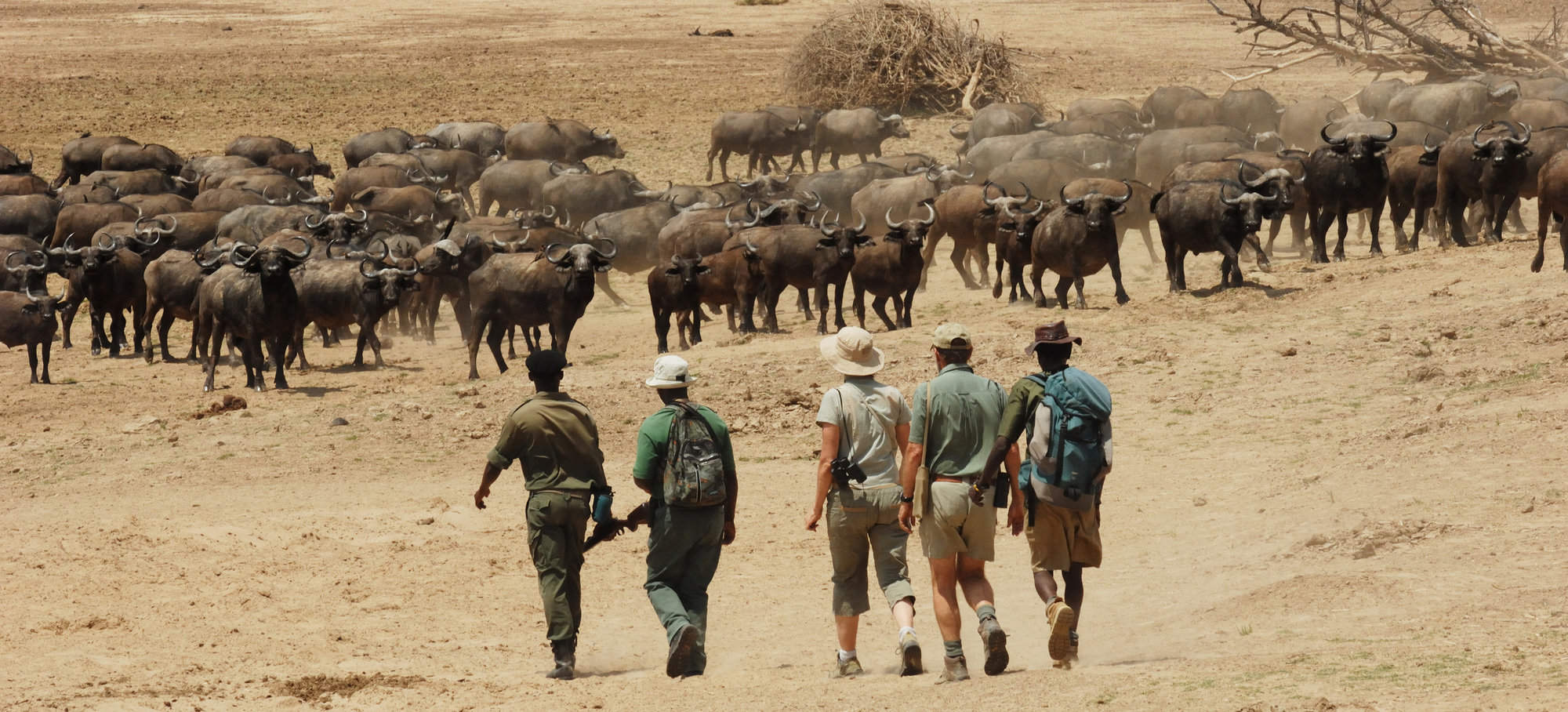
Weather & climate
Zambia: Weather & climate
The best time to visit zambia, weather in other african countries.
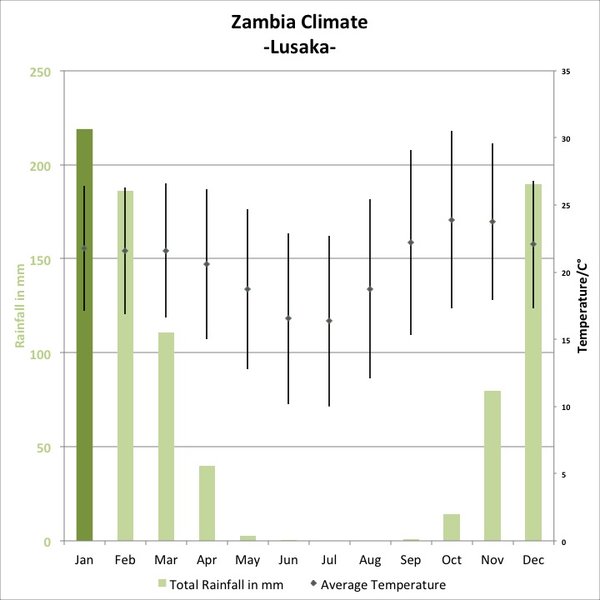
January : the peak of the wet season; it’s the wettest month of the year.
February : the rainfall is still comparatively high.
March : the last month of the rainy season.
April : the rain subsides gradually; most camps open again.
May : Most of the rain has faded away leaving the landscape beautifully green.
June : the rainfall has mostly stopped, the days are clear and warm.
July : the coolest month of the year so perfect for walking safaris; nights can be cold.
August : no rainfall at all whilst the temperature starts to rise.
September : a lovely and dry month with balmy evenings.
October : the hottest month of the year and the rainfall increases slowly.
November : an unpredictable month during the transition from dry to rainy season.
December : a wet, humid month as the rainy season has started; most camps close.

Need inspiration?
Let our trip chooser narrow down the options for you
Login to Expert Africa
Sign in with password
Sign in with email link
New to Expert Africa? Create an account
Forgotten your details?
It's free & quick to set up
- Save your wish-list
- Send us an enquiry
- Pay online for your trip
- Subscribe to our newsletter
- Give us feedback on your trip
- Full site benefits of the site
Need some help? Talk to our team
- Whens The Best Time Of...
When’s the Best Time of Year to Visit Zambia?

Freelance Writer
Zambia is a country for any type of traveler–from those wanting to visit Victoria Falls, go on safari in the national parks dotted around the country or to attend any of the country’s traditional ceremonies. With so much to do, figuring out the right time to travel to the southern African region can be daunting. Here’s our guide to when to go, organized month by month, with things to do and other important info.
The start of the year in Zambia is filled with heavy rain, which makes travel to other parts of the country difficult, but not impossible, due to impassible roads. Some camps in Lower Zambezi, Kafue, South Luangwa and other national parks stay open during this period—known as the emerald season—and offer discounts. Travelers wishing to save money on a safari trip should visit those national parks.
Average temperature (Lusaka): 72°F (22°C)
Average rainfall days (Lusaka): 17
February is characterized by rain and thunderstorms. Take a break from Lusaka and head to Katete in the Eastern Province for the N’cwala traditional festival celebrated by the Ngoni people.
Average temperature: 72°F (22°C)
Average rainfall days: 12
https://www.instagram.com/p/BCSfJ0FKgQ8/?tagged=ncwalaceremony
Due to International Women’s Day and Zambia’s Youth Day public holidays on March 8 and 12 respectively, many lodges in Livingstone and Siavonga, which are both located in the Southern Province, are booked months in advance by families seeking a short getaway from Lusaka. So prior plans should be made if looking to visit those places.
Average rainfall days: 9
https://www.instagram.com/p/BguHHrig13S/?tagged=siavonga
April marks the end of the rainy season and the re-opening of many camps and lodges in national parks that were closed, such as Kafue National Park, Lower Zambezi, South Luangwa and others. The Kuomboka traditional ceremony of the Lozi people also takes place in April, although the exact date changes depending on when the Zambezi river floods the Western Province’s plains.
Average temperature: 68°F (20°C)
Average rainfall days: 2
Labor Day is on May 1, which is a public holiday. Runners should sign up for The Lafarge marathon, the longest running marathon in Lusaka that takes place on the first Saturday of the month. The Alliance Motor Rally is held on the first Friday and Saturday of May. Africa Freedom Day, which is on May 25, is also a public holiday. The Livingstone International Cultural Arts Festival (LICAF), an annual three-day festival showcasing the tourist capital is held in May.
Average temperature: 64°F (18°C)
Average rainfall: 0
Temperatures drop further in June and it is typically the coldest month of the year, so visitors should bring warm clothing. Mountain biking enthusiasts can sign up for The Mountain Bike Challenge , a grueling 155–mile race in Livingstone, Southern Province. Escape the winter by spending a weekend in Siavonga , a popular town by Lake Kariba in Southern Zambia.
Average temperature: 61°F (16°C)
Average rainfall days: 0
The first Monday and Tuesday of July are Heroes, and Unity day respectively, which are both observed as public holidays. Tourists can head to the Victoria Falls and swim in the Devils Pool, an infinity pool at the edge of the falls. Escape the cold weather and head to Muchinga Province to soak in the Kapishya hot springs.
Average temperature: 59°F (15°C)

The month of August hosts many traditional ceremonies, such as the Likumbi Lya Mize of the Kaonde tribe in the North-Western Province—which celebrates male initiates; Kulamba of the Chewa people in the Eastern Province; Ukusefya Pa Ng’wena of the Bemba tribe in Northern Province, which celebrates harvest, and more.
August also marks the start of the hot air ballooning season in the Busanga plains of Kafue National Park. The Agricultural and Commercial Show trade fair is held during the first weekend of the month. The first Monday of the month is Farmers Day and a public holiday. Early August is usually windy and dusty, but by the end of the month the warmer temperatures mark the beginning of summer.
August also marks the start of the river surf season at Victoria Falls, which lasts until January.
https://www.instagram.com/p/Ba1J_leHAB-/?tagged=busangaplains
September is the start of the hot season, and a great time to cool off at Samfya beach—a white sandy beach on Lake Bangweulu in Northern Zambia—or to hike and camp at the Mutinondo Wilderness. Continue discovering the northern circuit by visiting Lake Tanganyika and scuba dive, take a walking safari in the Nsumbu National Park, or hike up the Kalambo waterfalls. Visitors should carry sunscreen and swimsuits.

Oktoberfest takes place in the town of Chisamba, Central Province in the second week of October. Zambians celebrate independence on October 24, which is a public holiday, so banks, bureaus and other businesses only remain open until midday. The second Sunday of October is a national prayer and fasting day, and another public holiday. Various traditional ceremonies take place in October, such as the Chakwela Makumbi of the Soli people in Chongwe, Lusaka, the Shimunenga of the Ila people in the Southern Province and more.
Zambia Fashion Week is also held in October, usually the second week. The White Water Festival is held at the Waterfront in Livingstone in late October.
Average temperature: 75°F (24°C)
https://www.instagram.com/p/Ba2xfDUhTrh/?tagged=zambiafashionweek
November is the start of the rainy season in Zambia, which means national parks experience fewer visitors due to the rain making some roads impassible and the thick vegetation making it harder to spot animals while on safari. However, it is still a great month to visit Kasanka National Park in Central Province for the annual bat migration phenomenon, which sees around five million bats take residence in their temporal home while they feed on the wild fruits of the forest.
Average rainfall days: 7
In December the rains continue, but that should not deter safari-lovers from heading to Liuwa National Park in the Western Province to experience the wildebeest migration and spot lions, wild dogs and other predators. Christmas Day (December 25) is a public holiday.
Average rainfall days: 15
When not to go to Zambia
Although Zambia can be explored at any time of the year, June and July offer the least activities and are the coldest months, so visiting any other time would be ideal.
Since you are here, we would like to share our vision for the future of travel - and the direction Culture Trip is moving in.
Culture Trip launched in 2011 with a simple yet passionate mission: to inspire people to go beyond their boundaries and experience what makes a place, its people and its culture special and meaningful — and this is still in our DNA today. We are proud that, for more than a decade, millions like you have trusted our award-winning recommendations by people who deeply understand what makes certain places and communities so special.
Increasingly we believe the world needs more meaningful, real-life connections between curious travellers keen to explore the world in a more responsible way. That is why we have intensively curated a collection of premium small-group trips as an invitation to meet and connect with new, like-minded people for once-in-a-lifetime experiences in three categories: Culture Trips, Rail Trips and Private Trips. Our Trips are suitable for both solo travelers, couples and friends who want to explore the world together.
Culture Trips are deeply immersive 5 to 16 days itineraries, that combine authentic local experiences, exciting activities and 4-5* accommodation to look forward to at the end of each day. Our Rail Trips are our most planet-friendly itineraries that invite you to take the scenic route, relax whilst getting under the skin of a destination. Our Private Trips are fully tailored itineraries, curated by our Travel Experts specifically for you, your friends or your family.
We know that many of you worry about the environmental impact of travel and are looking for ways of expanding horizons in ways that do minimal harm - and may even bring benefits. We are committed to go as far as possible in curating our trips with care for the planet. That is why all of our trips are flightless in destination, fully carbon offset - and we have ambitious plans to be net zero in the very near future.

Zambian Authors You Should Know

Guides & Tips
The most popular travel bloggers from zambia.

An Introduction to Zambia’s Kaonde Tribe

The Ultimate Guide to Rocktober, Zambia

Why Visiting Victoria Falls Is Now Easier Than Ever

A Street Art Tour of Lusaka, Zambia

Food & Drink
The 10 best breakfast and brunch spots in lusaka, zambia.

An Introduction to Zambia's Lozi People

An Introduction to Zambia’s Luvale People

Restaurants
The top 10 restaurants in lusaka, zambia.

Africans in Space: The Incredible Story of Zambia’s Afronauts

The Circus School Empowering Zambia's Children
Culture trip spring sale, save up to $1,100 on our unique small-group trips limited spots..

- Post ID: 2166846
- Sponsored? No
- View Payload
8-day journey through Zambia

Nov 15, 2022 • 12 min read
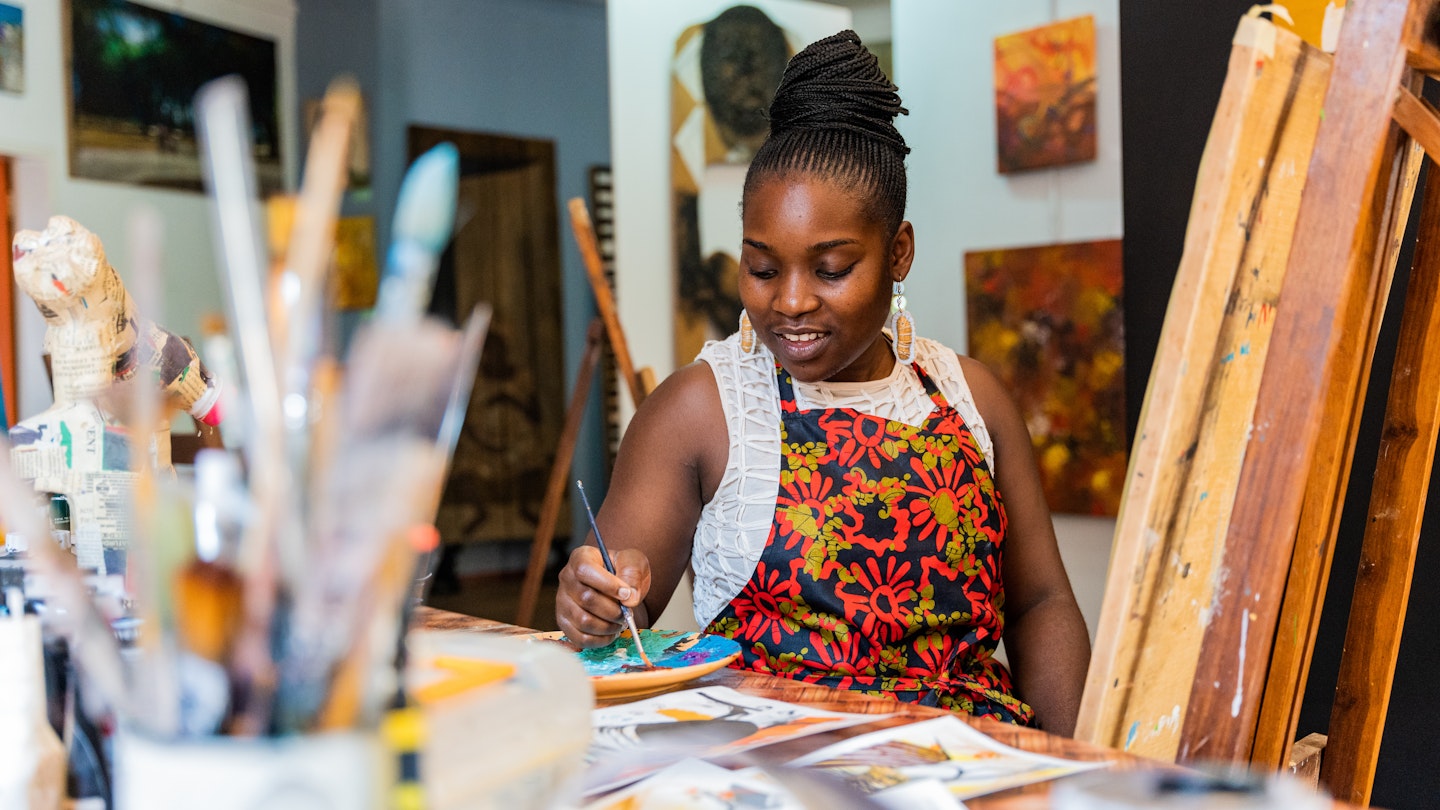
Wayi Wayi Art Gallery holds frequent workshops © Jason Mulikita/Lonely Planet
With memorable activities like swimming on the ledge of a mighty waterfall to walking safaris, it’s surprising Zambia is less visited than other spots on the continent of Africa.
We recommend making it top of mind if you are considering a journey that involves spotting wildlife.
Mazuba Kapambwe-Mizzi shows you how to plan a wonderful week in zesty Zambia, her home country.

I have been a travel writer for almost 10 years, and have lived in Germany, Ethiopia, New York and Washington, DC. Yet I’ve spent half my life in my home country of Zambia. From my first time on a safari, where I went canoeing on the banks of the Zambezi river, to getting married at Victoria Falls, the heritage sites and culture of my country still leave me in awe.

Why you should visit Zambia
A landlocked country in Southern Africa , Zambia brims with waterfalls, lakes and national parks that make it an ideal destination for learning about history, experiencing culture and (of course) setting out on safari. You’ll find fewer visitors here than in neighboring countries like Botswana and Zimbabwe – making for more intimate experiences with more personal attention from guides.
The over 70 ethnic groups in the country host colorful traditional festivals throughout the year. The Kuomboka ceremony in Western Zambia, for example, involves the Lozi ethnic group migrating from lower flooded land to higher land, complete with a large barge; the Ncwala ceremony in the East sees locals don animal skins to celebrate the annual harvest.
Since the country is large and destinations spread out, it is best to select two regions to explore during a week-long stay.

Explore lively Lusaka
Begin your first day in the Zambian capital of Lusaka with a cup of Zambian coffee and breakfast at Latitude 15 Degrees , a boutique hotel in the suburb of Kabulonga. In the same neighborhood, Meraki is a women-owned cafe that serves all-day breakfast. (standouts include the red-velvet cake, and the robust Meraki Breakfast, which consists of eggs, crispy bacon, hash browns, beef-and-pork sausage and baked beans).
Next, check out work by such Zambian visual artists as Stary Mwaba, Mulenga Chafilwa and more at the stArt Foundation’s 37D Gallery on Middleway St. Mwaba’s large-scale acrylic paintings feature colorful profiles of subjects, while Chafilwa’s mixed-media work often depicts multiple subjects placed in urban settings, and responds to socio-economic themes such as unemployment. Proceeds from the sale of art at 37D go toward funding workshops for disadvantaged children and other social enterprises. Also on the property, Rock Cafe is ideal for an iced coffee or a snack like bacon quiche or chocolate brownie.
Book a taxi or use local ride-sharing apps Ulendo or Yango and head down Leopards Hill Rd for about 9.3 miles (15km) before turning on Chifwema Rd to the entrance to Lusaka National Park , the smallest of the country’s 20 parks. The park hosts an elephant orphanage run by Game Rangers International: visit at 11am to watch the majestic animals feed, then do a loop around the park in your vehicle to potentially see antelopes, zebras and giraffes. On your way out, purchase locally made artisan products like baskets, jewelry, Zambian-grown coffee or honey from Lusaka Collective, which has an outlet at the park’s discovery center. This entire mini safari should take about two hours.
Arguably Lusaka’s best restaurant scene is concentrated in the tree-lined suburbs of Long Acres and Rhodes Park. For sushi, freshly made wraps and grill-fired steaks, Three Trees is a favorite. (We’d recommend a reservation during the busy lunch hour.) Eataly Pizzeria serves up tasty pies (try the quattro stagioni or chicken diavola) and pastas (we love the penne alfredo).
For traditional Zambian cuisine, visit Mpoto Yatu on Omelo Mumba St. Order nshima, the corn-based staple food of the country, and pair it with a protein such as kafue bream or goal-meat stew. Every meal is served with vegetables, ranging from brown beans, okra to ifisashi (kale cooked in a peanut sauce).
After lunch, explore Zambia’s political and cultural history at the Lusaka National Museum , where artifacts on display include t-shirts from former political campaigns, as well as baskets and pottery made by Zambian ethnic groups including the Lozi and Tonga. The main floor of the museum features rotating exhibitions of contemporary art.
As the sun sets, have a margarita, Moscow Mule or glass of wine together with guac and chips at Cantina, Lusaka’s only Mexican-inspired restaurant, in the Kabulonga district. Make dinner reservations back at Latitude 15, or trendy hangout spot The Other Side, on the same premises. On Friday evenings, sit by the pool and end the night with live music (from 9–11pm) played by a rotating list of local musicians. Want a nightcap? Ask for Jeff the bartender, who makes excellent mojitos.

The falls call
Have a quick breakfast, then head to the airport for the hour-long flight to Livingstone , Zambia’s tourist capital. Check into the mid-range Avani Hotel or its sister property, the more luxurious Royal Livingstone. Both are in close proximity to Victoria Falls , with the Avani offering a private entrance for guests at the back of the property.
After lunch at either Avani’s Shungu pool terrace restaurant or Royal’s The Old Drift, it’s time for the main event. Take in breathtaking views by walking the knife-edge bridge that crosses the falls as you admire the “eternal rainbow” generated by the mist. (Be sure to wear a raincoat if you don’t want to be soaked by the spray.) Additionally, you can hike downhill to the Boiling Pot whirlpool at the base of the falls.
At 4pm, choose between a sunset cruise on the Zambezi River – hippo and elephant sightings are likely – or a safari in Mosi-oa-Tunya National Park , where you can expect to see giraffes, elephants, antelopes and white rhinos (the last guarded by armed rangers). Both activities, bookable through a hotel or travel agent, last about two-and-a-half hours.
Return to the hotel for dinner at Avani (live musicians perform on Friday evenings) – or, for a typically Zambian evening, enjoy traditional food, music and storytelling at the Mukuni Boma. This experience recreates the Zambian way of eating a meal with family and friends while catching up on the latest gossip.

See Victoria Falls from a different perspective
Get up bright and early for an activity-filled day at the falls. You can take a “micro flight” or helicopter ride to see the falls from above (15 minutes from $179; 30 minutes from $360). Another option is bungee jumping ($160) at the Victoria Falls Bridge, a 364ft (111m) span across the Batoka Gorge with the Zambezi River below.
You can also conquer the 13 rapids of the Zambezi River by white-water rafting ($150). An ever-appealing option is a dip in the Devil’s Pool , a natural rock pool at the edge of the falls (guided tours from $98). Another thrilling activity is the gorge swing ($95), during which you’ll free-fall 230ft (70m) into the Batoka Gorge with a full-body harness attached to your back.
Adrenaline-inducing activities will have you working up an appetite, so head into Livingstone’s center (the locals call it simply “town”) and have a lunch of burgers and fries at Kubu Cafe , or Italian fare at Olga’s (don’t miss the crocodile pizza). Stop into Lavender Cafe across the street from Kubu for a nice post-meal cappuccino.
Work off the calories by taking a walk on the main street, past buildings from the early 20th century that date to Livingstone’s time as Zambia’s colonial capital. Pop into the Livingstone Museum for a lesson in the history of the region and country, with historic photographs, traditional produce and life-size models of local wildlife on display.
Culture lovers can take a taxi to Wayi Wayi, an art gallery run by visual artists Lawrence and Agnes Yombwe where paintings, drawings, sculptures and work in other media is exhibited. The Livingstone National Gallery offers rotating exhibits of contemporary pieces by local artists.
For a truly special dinner, enjoy five courses featuring ceviche, canapés and Wellington beef aboard the Royal Livingstone Express , a 1920s steam train outfitted with leather and upholstered seats, and tables laid out with white linens. The four-hour excursion takes you through Mosi-oa-Tunya Park (where you may see elephants and impalas on the savannah) and across the Victoria Falls Bridge.


Luxury back in Lusaka
Spend the last morning in Livingstone with a guided tour at Mukuni Village, home to the Toka-Leya culture. You’ll learn fascinating things about this people – who are jointly ruled by a female ruler, and whose male chiefs each swallow a rock when they take power (this is removed upon their death and passed on to the next ruler in line). If you are lucky, you may even be granted an audience with Chief Mukuni, the area’s traditional leader. A village craft shop is perfect for such souvenirs and gifts as baskets and beads.
Catch a flight back to Lusaka and check into Ciêla Resort, 20 minutes from the airport. At this extensive estate, you can relax by the pool, play golf, have lunch at The Brewery restaurant (which brews its own beer), view art at Chena Gallery or have a spa day. The coffee body wrap and the hot-stone massage are especially indulgent.
Make dinner reservations at Botanica, the newest gastronomy restaurant on the estate. On his six- and 12-course tasting menus, chef Sungani Phiri elevates Zambian cuisine by taking inspiration from traditional dishes and modernizing them. For example, impwa, a green, pod-shaped vegetable with a bitter aftertaste usually cooked in a tomato-and-onion stew, is here puréed into a hummus, while the fermented white beverage munkoyo becomes a stylish cocktail.

Head into the bush
Take a plane to South Luangwa National Park in Mfuwe, Eastern Zambia, where a guide will meet you and take you to your safari lodge of choice. Budget travelers can consider Croc Valley (where dorm-style rooms cater to large groups) and Marula Lodge (select a chalet overlooking the river); mid-range options include Thornicroft and the newly opened Bush Box (where rooms occupy converted shipping containers).
Luxury lodges include Chinzombo (where each of the six luxury tents has a private patio), Sungani (a remote camp that requires an additional flight to reach) or Puku Ridge (an intimate eight-tent resort featuring views of wildlife on the Luangwa plains).
Have lunch at your lodge, then relax a bit. At 3:30pm, coffee, tea and snacks are served at the communal dining area, before everyone heads out into the bush at 4pm for an evening game drive. You’ll see amazing sunsets on the plains, cool off with a sundowner and likely spot everything from lions and wild dogs to nocturnal animals like hyenas, bush babies and hippos.
You’ll arrive back at your lodge for a leisurely dinner and dessert. If visiting during the colder months of June and July, you can gather at the outdoor fire in the communal area to reflect on your wildlife sightings with fellow guests.
Watch all the wildlife
Mornings on safari begin with a 5:15am wake-up call. A light breakfast of granola, yogurt, fruits and coffee or tea is served at 5:45 – then it’s off for your morning game drive. Keep your eyes peeled for the Thornicroft giraffe, a species only found in South Luangwa. It is distinguishable from other African giraffes by its smaller size, darker markings and its lack of a patterned hide below the knees.
A couple of hours into your morning, your guide will park the car and you’ll all embark on a walking safari, a more intimate way to observe wildlife. You can expect to learn how to track animals from their footprints and dung, identify such trees as the baobab and tamarind, and discover nature’s many practical applications. Did you know, for example, that burning elephant dung repels tsetse flies? Or that a porcupine quill can stop a nosebleed? These are things I have learned on walking safaris.
After lunch at the lodge, take part in a paint workshop at home-decor company Tribal Textiles, which reinvests profits into community-conservation projects. Another social enterprise worth supporting in the area is Mulberry Mongoose, whose artisans make jewelry using confiscated animal snares and other creative materials (think a “rhino conservation snare bracelet” made from snare wire, vegetable-ivory seed and Zulu seed). Head back to the lodge for afternoon tea and snacks – followed by another evening safari and dinner at the lodge.
The following morning, tick the remaining animals off your list with a final safari session.
After a last lunch at your lodge, head back to Mfuwe airport for the one-hour flight to Lusaka.
Back in the capital, have dinner at one of East Park Mall’s numerous restaurants. Night Jar is known for good cocktails, Marlin is known for its pepper steak and the newly opened Prime Catch caters to fish lovers (try the smoked salmon salad or the hake).

Stock up on handmade souvenirs
If still on Great East St, have a cappuccino and breakfast at Vida Cafe, Brew Me or Corner Cafe. If it’s a weekend, Arcades Shopping Center hosts a weekly crafts market where various stalls sell accessories, brightly colored fabric called chitenge, baskets and more. (As prices are not fixed, you will have to haggle with vendors – an experience in itself.) If traveling during the week, head to Kabwata Cultural Village for items like key chains, fridge magnets and baskets.
Take a taxi or drive down Great East St toward Chongwe to The Orchard, a farm-to-table restaurant with flower-filled, Instagram-friendly gardens. Order the smoked barbeque ribs or the honey-glazed salmon – before heading to the airport and home after an unforgettable week.
Want to head to Zambia but wish there was someone to plan this out for you? Let Lonely Planet’s sister company Elsewhere take away some of the stress of planning by connecting you with the best local expert to craft your dream trip.
Explore related stories
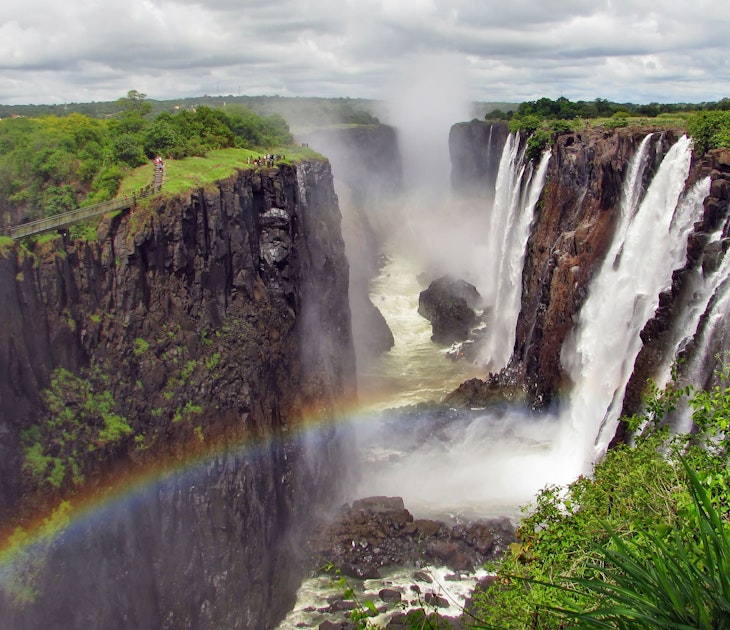
Best in Travel - 2023
Nov 15, 2022 • 1 min read
Follow gamer Mark Mpundu as he shows you his idea for the perfect day in Livingstone, Zambia.

Apr 25, 2024 • 7 min read

Feb 20, 2024 • 17 min read

Jan 5, 2024 • 20 min read

Jan 2, 2024 • 11 min read

Dec 8, 2023 • 6 min read
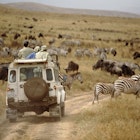
Nov 23, 2023 • 9 min read
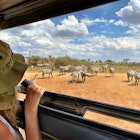
Nov 15, 2023 • 6 min read

Oct 29, 2023 • 12 min read
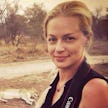
Chat to an expert
Get advice and recommendations for your trip.
Our guests rate us 5 out of 5 stars
Read what they say
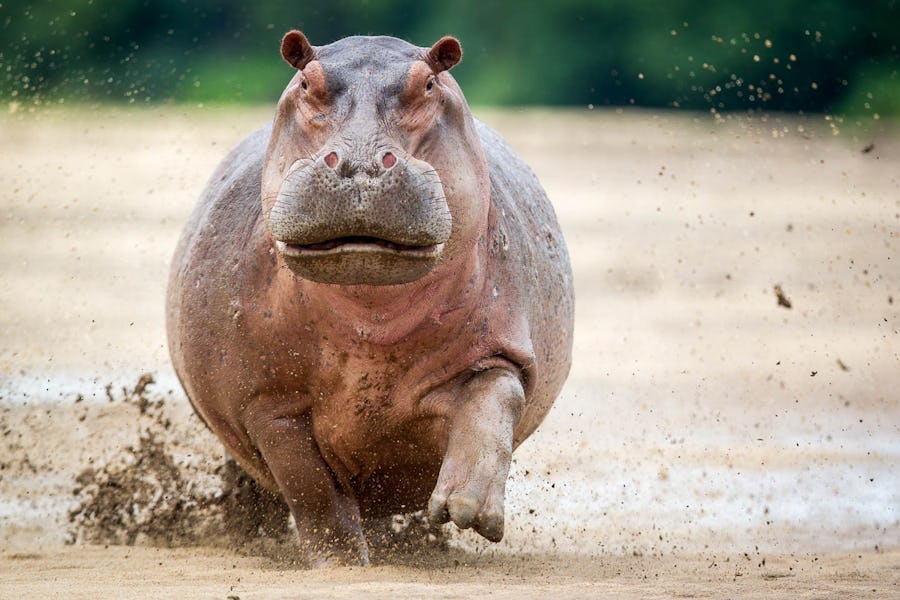
The best time to visit Zambia
We know the importance of weather when it comes to a safari, be it game driving in the South Luangwa , chilling out on the river in the Lower Zambezi , or streaking above Vic Falls in a chopper. Zambia has very distinct weather patterns that make defining safari seasons in the different parks quite easy. But, as ever, global warming seems determined to wreak havoc with the climate so there is an element of unpredictability. Read on for our general guide to the best time to visit Zambia, weather patterns and all (and if you’re still struggling to find the time to suit you, take a look at our comprehensive when to go guide for a month-by-month deep dive).
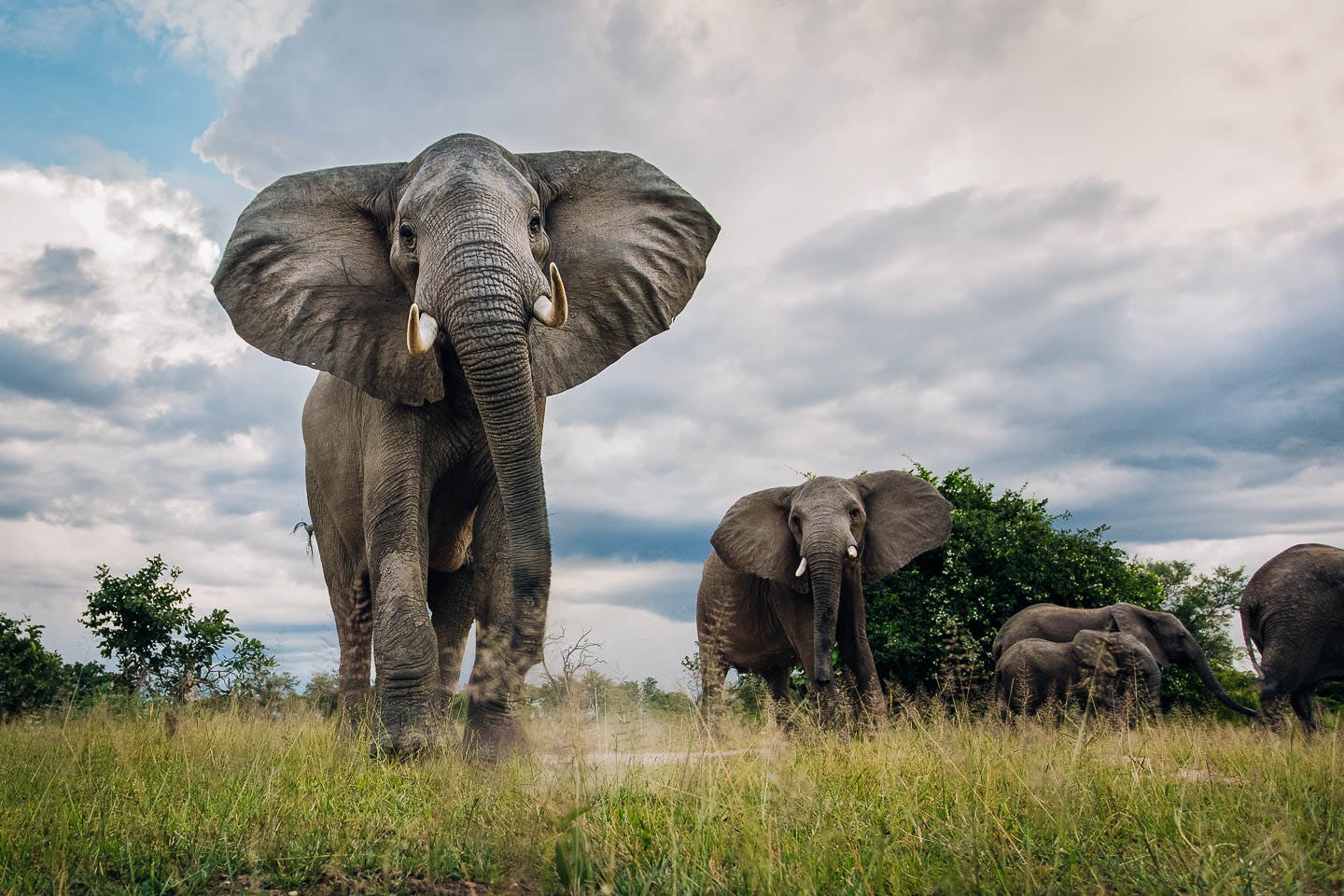
December to April: The green season
It might seem strange to start at the end of the year, but December actually marks the true beginning of Zambia’s green season that carries on through to March and April. It may be a little wetter than normal but this is one of the best times to visit Zambia. The parks are luscious and green, the light is phenomenal and there’s not a bit of dust in sight – a photographer’s dream. Many of the remote bush camps in places like the South Luangwa , Luambe and the North Luangwa will be closed but there are still a good number of lodges open, and at very competitive prices. For boating in the South Luangwa , time your visit for February or March; several of the bush camps re-open ( Time and Tide Kakuli Bush Camp and Nsefu bush camps spring to mind) and are accessible only by water, making for a wonderful experience. Take a look at this green season itinerary if that sounds like your cup of tea. Down at Victoria Falls , the waterfall is in full flow and possibly at its most spectacular, but the high levels of water aren’t so good for white-water rafting.
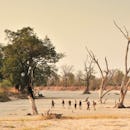
April & May: the shoulder season
April and May (and November) are the ‘shoulder season’ months in Zambia . The rains are pretty much over – although anything could happen and it would be wise to prepare for a shower here and there – and the game viewing heats up as the grass recedes. It truly is a lovely time to travel and if you’re looking to save a few pennies, this is the best time of year to seek out excellent deals. Remember that lots of the remote bush camps in the South Luangwa , Lower Zambezi and Kafue are closed and walking isn’t at its best, but you’ll still have a good selection of accommodation to choose from. Victoria Falls are still a spectacular sight at this time of year with the water level of the Zambezi peaking, showcasing the falls in all her glory.
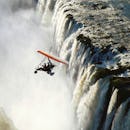
June to October: The peak season
The peak safari season, and traditionally the best time to visit Zambia , is from June to October. It’s actually winter, but perhaps not the same winter we northern hemisphere dwellers are used to! We’re talking clear blue skies, sunshine (and lots of it) and rarely a drop of rain. The coldest months are June and July, and mornings and evenings can be chilly but nothing a good jacket can’t solve. As the season progresses, it steadily heats up and becomes drier and October is hot, hot, hot – think an average of 36 degrees. But, if you can stand the heat, the game viewing is phenomenal across the main parks with animals congregating at the main water sources and predators taking full advantage of the mobile buffet.
If you choose to travel now, you’ll have the pick of the camps in the South Luangwa and the Lower Zambezi , and by mid-June, even the most far-flung bush camps will be open. If you’ve got your eye on the Kafue , get there earlier rather than later for the chance to boat around the Busanga Plains . For the Lower Zambezi and South Luangwa, walking safaris get better toward the end of June as the tall grass recedes.
At Livingstone and Victoria Falls , the water level actually goes down as the season progresses. From May to July/August, the water is pumping, throwing spray hundreds of metres into the air, just like the postcards. After August, the water level recedes making it the best time to visit for the Devil’s Pool and ‘low water’ white-water rafting, undoubtedly the most exhilarating! Contrary to some news reports, the Falls never dry up and even if you’re visiting towards the end of the season, they are still a sight to behold.
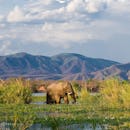
November: the Shoulder Season
November is rather like April and May. The chance of rain is quite high and the first storms of the season are dramatic and incredible to witness. The bush camps start to close and accommodation choices are fewer in many areas, but what that does mean is that you’ll have the parks (and the wildlife sightings) pretty much all to yourself. If you choose to travel now, you certainly won’t be disappointed.
And for the exception that proves the rule: Liuwa Plain . Unlike the rest of the country, the best time to visit Liuwa is in late November to December for the astonishing wildebeest migration (the second largest on the continent), or April, May and early June when the rains are over. Flights to Kalabo are seasonal, and there’s very limited accommodation in the park (the only permanent lodge at the time of writing is King Lewanika ), both of which dictate when you can and can’t travel, but if it fits into your plans – go, go go!
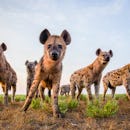
Not sure where to go?
Try our trip wizard to find your dream trip

- Central African Republic
- Democratic Republic Of Congo
- Indian Ocean
- Republic Of Congo
- South Africa
- Latin America
- Galapagos Islands
- North America
- Polar regions
- Arctic Canada
- Australasia
- Gorilla Tracking
- Grizzly Bears
- Polar Bears
- Puma Tracking
- Snow Leopards
- Blue Whales
- Bengal Tigers
- Siberian Tigers
- African Lions
- Spirit Bears
- Lowland Gorillas
- Experiences
- Jungle Holidays
- Bush and Beach Combinations
- Conservation Travel
- Natural World Heroes
- Work with Us
- Consumer Protection Overview
- Privacy Policy
- Press and Awards
- Client Reviews
- Expedition Leaders
- Specialist Leaders
- Expeditions for Change
- Journey to Natures Edge
- Country: Settings: Country:
- Currency: Currency:
- Call Us (619) 975-8082
- Destinations
- Gorilla Trekking
- EXPERIENCES
- Journey to Nature's Edge
When to visit Zambia
The best time to visit Zambia is during the dry dry season between August and November. Zambia is a relatively temperate country, although the climate can range from 21°C or 70°F to 31°C or 88°F depending on the altitude, which generally varies between 1,000 and 1,600 metres - largely dictated by the valleys of the Zambezi, Kafue and Luangwa Rivers. The recognised best times to visit Zambia are during the dry season, and unlike other busier destinations in East and Southern Africa the numbers of visitors are small, so this need not be a major consideration when planning your journey as it never feels busy and the scenery is spectacular at any time of year. From day to night, the temperatures can drop quite dramatically, no matter what time of the year you are travelling, but especially in the months of June and July.
The famous Victoria Falls is one of Zambia's treasures, and the dry season from August to November is the finest time to experience its majestic magnificence. The Zambezi River's water levels are lower during these months, providing breathtaking vistas of the falls and typically permitting activities like swimming at Devil's Pool. The dry season allows for exciting excursions like walking along the Knife-Edge Bridge and gives a clearer perspective of the geological wonder. Victoria Falls can be visited at any time of year, but the dry season offers the best chance to appreciate this natural wonder. Zambia is always beautiful.

Talk to a Zambia Specialist Today
The best time to visit zambia.
The rainy season in Zambia lasts from November to April, with January falling squarely in the middle of it. Typical daytime temperatures fall between 70°F and 88°F (21°C to 31°C). It rains frequently during this season, which is warm and humid.
July - October
The traditional dry season in Zambia, this is the most comfortable time temperature wise, and also the most popular. The temperatures gradually build as you move into September and October, with some areas such as Luangwa Valley and Lower Zambezi in particular feeling the heat, but with animals seeking water along the river banks the game viewing can be phenomenal.
November - April - June
These ‘shoulder’ months are still great times to visit, as they can be less busy and between seasons which can mean pleasant weather. November is a hard month to predict and you might have a completely dry month or see the first rains fall heading into the wet season. April to June is a verdant landscape and most of the rain will have stopped, especially so in May/June. This is also an ideal time to visit Victoria Falls.
December - March
The wet season, when the scenery is stunning and prices of accommodation are generally much lower. However, it is not ideal for everybody as weather can vary hugely within the same day. Waterproofs are required, but the rains are short lived, meaning that it does not prevent you from enjoying activities over long periods, except perhaps for some travel on minor roads. Generally the rain arrives quicker and subsides later the further north you are, and the east experiences more rainfall than the west. Some camps are known to close so consult us if you are unsure.
Zambia Planning

Zambia Walking Safari
A fantastic 11 day Zambia walking safari through the beautiful South Luangwa Valley National Park. Get up close to the wildlife and gain an understanding of the smaller parts of the African bush with some of the best guides in the industry. A truly eye opening experience as you explore the South Luangwa Valley National Park on foot with some of the best guides in Africa. Topped and tailed by the lovely Nkwali Lodge and Tena Tena Camp, this safari is perfectly balanced to provide you with a unique experience at the same time as the creature comforts that one requires.

Classic Zambia Safari
The entirety of this 10-day safari will be spent in Zambia's South Luangwa National Park, allowing you to fully immerse yourself in this rich wildlife destination. From your secluded lodges and camps you'll be able to head into the bush and search for giraffes, hippos, zebra, thousands of elephants and a prodigious predator population, including lions, leopards, painted dogs and more.

Photographic Safari: In Search Of Painted Wolves
Visit Lower Zambezi National Park and Kafue National Park in Zambia with acclaimed wildlife photographer Nick Dyer in search of wild dogs. At Natural World Safaris we firmly believe in right time, right place, and Zambia is the perfect destination to take advantage of good sightings of a large pack of wild dogs.
Things to do in Zambia
If you want to see the bat migration , travel to Zambia in November to December sees up to ten million fruit bats descend upon Kasanka National Park.
If you want to see herds of wildebeest , travel to Zambia during November when the large herds gather in the Liuwa Plains to make the most of the fresh grazing.
Travel to Zambia from July to October for the best conditions to spot big cats and other predators .
Mosi-oa-Tunya National Park
Discover the Entebbe Botanical Gardens, which are home to a variety of plants and birds and are located on the banks of Lake Victoria.
Kafue River
Take advantage of the Kafue River's famed tiger fish and wildlife by fishing and birdwatching there.
Kasanka National Park
Visit Kasanka National Park to witness the annual bat migration, when millions of fruit bats congregate in a stunning natural spectacle.
Livingstone Island
Get an opportunity to swim in the Devil's Pool, a natural infinity pool on the edge of Victoria Falls, by taking a guided tour to Livingstone Island.

Username or E-Mail
Forget Password?
Do not have an account?
Already a member.
- Lake Malawi National Park
- Likoma Island
- Livingstonia
- Liwonde National Park
- Majete Wildlife Reserve
- Mount Mulanje
- Nkhotakota Wildlife Reserve
- Ntchisi Forest Reserve
- Nyika National Park
- Satemwa Tea Estate
- Viphya Plateau
- Zomba Plateau
- Northern Lake Shore
- Southern Lake Shore
- Ntchisi Forest
- Nyika Plateau
- Malawi Itineraries
- Malawi Gallery
South Luangwa National Park
Lower zambezi national park.
- Livingstone & Victoria Falls
Kafue National Park
- Liuwa Plain National Park
- North Luangwa National Park
- Luambe National Park
- Liuwa Plain
- Livingstone, Victoria Falls
- Zambia Itineraries
- Zambia Gallery
- Bazaruto Island
- Benguerra Island
- Ilha de Mozambique
- Gorongosa National Park
- Ilha De Mozambique & Nuarro
- Bartholomew Dias (Inhassoro)
- Maputo & Machangulo
- Massinga Beach & Morrungulo
- Tofo & Barra
- Vilanculos & The Islands
- Mozambique Itineraries
- Mozambique Gallery
- Pemba Island
- Mafia Island
- Fanjove Island
- Mnemba Island
- Tanzania Gallery
- Walk Malawi – 9 nights
- Conservation Malawi – 10 nights
- Malawi Highlights – 12 nights
- Malawi Luxury – 13 nights
- Malawi South to North – 21 nights
- Lake Malawi Extensions
- Hippos & Hides – 9 nights
- Two Rivers Comfort – 9 nights
- Two Rivers in Style – 9 nights
- Two Rivers Luxury – 9 nights
- South Luangwa Southern Explorer – 10 nights
- Zambia In Style – 11 nights
- South Luangwa Adventure – 12 nights
- The Lower Zambezi Explorer – 13 nights
- The Luangwa Valley – 13 nights
- Classic Zambia – 14 nights
- The Kafue Explorer – 14 nights
- Three Rivers Luxury – 15 nights
- Three Rivers – Wild & Authentic – 15 nights
- The Instagrammable Itinerary – 16 nights
- Wild Zambia – 19 nights
- Diving & Yoga Adventure – 14 nights
- Diving, Dunes and Dolphins – 16 nights
- Far and Wild Honeymoon – 8 nights
- Zambia & Malawi Luxury – 10 nights
- Green Season Luxury – 13 nights
- Zambia and Malawi Family – 13 nights
- Sunsets and Safaris – Mid Range – 14 nights
- Sunsets and Safaris – In Style – 15 nights
- Sunsets and Safaris – Luxury – 15 nights
- South Luangwa and Northern Malawi – 15 nights
- Southern Malawi & South Luangwa – Classic – 16 nights
- Adventure Green Season – 17 nights
- Southern Malawi & South Luangwa – In Style – 17 nights
- A Walk on the Wild Side – 21 nights
- Whales & Wildlife – 14 nights
- River Ocean Explorer – 14 nights
- Zambia & Mozam in Style – 14 nights
- Wild Africa – 20 nights
- MalZamBique Combo – 21 nights
- The Big Three – 21 nights
- Wildlife and bird safaris
- Beach Retreat
- Crafted Luxury
- Adventure junkies
- Honeymooning
- Family Holidays
- Walkers’ paradise
- Scuba freak
- Fish fanatics
- Meet the Team

The Best Time to Visit Zambia
When is the best time to visit zambia.
Africa is known all over the world as the best destination to go on Safari. However, when most people think of Africa, they think of the Serengeti in Tanzania or the Mara in Kenya or Kruger in South Africa. However, there is a hidden gem located between those locations. That place is Zambia .
Zambia is a great destination considering its wide variety of wildlife, birds, scenery and vegetation. The weather here is divided into the dry season and the wet season. The dry season runs between May and October. This is usually the peak season for tourism. The wet season runs between November and April. This is known as the green season and is usually the off-peak season for tourism.
However, these seasons should not deter you from visiting Zambia at any time of the year. Below are the top destinations in Zambia, all of which can be visited year round.

Victoria Falls
Victoria Falls is probably the most famous attraction in Zambia. This spectacular site attracts visitors from all over the globe.
The peak season is usually characterized by high temperature meaning that water level is low. This is the best time for white water rafting. Rafting carries extra significance during this time since you get to see the amazing wildlife of Zambia up close while battling the current of Zambezi River. This is also the best time to have a dip in Africa’s most impressive infinity pool, Devil’s pool. Furthermore, since the water is low, you have the opportunity to visit Livingstone Island.
You can also visit Victoria falls during the green season. Around the months of February to April, River Zambezi will have swelled up due to the rains. This is when the falls are at their most spectacular. The falls create water sprays that are simply breathtaking. Be sure to carry your camera during this time since this is a view you will not want to forget.

Kafue National Park is a national park in Zambia that shows the regenerative power of nature given the right conditions. In the 0s, rebels had poached most of the wildlife in the park but due to conservation efforts, wildlife numbers have gradually increased.
This national park is generally unknown but it is a true hidden gem. This means that it is not frequented by many tourists. They do not know what they are missing, however. The grass at Kafue National park tends to remain green all through the dry season. This makes it a grazers paradise. You will definitely see herds of buffalo with lions hot on their tails. It promises to be an incredible experience as you take a safari across this great park.
During the green season, vegetation is dense and everything is green. This makes for a spectacular sight especially if you use a hot-air balloon or a helicopter to tour the park. In addition, about 400 species of birds throng the park during this season. There is no better time for bird watching than at this time.

South Luangwa has diverse wildlife, birds and vegetation that are present throughout the year. The peak season is during the dry season and it is at this time when wildlife is aplenty. You expect to see wildlife like leopards, lions and elephants. In the evenings you will see spectacular sunsets that you will simply have to capture.
During the green season, the rains begin and South Luangwa turns into a jungle. This is the best time for bird viewing and admiring the vegetation. The big cats live there all year round and this is also a great time to view them.

Liuwa Plains
Liuwa Plains is probably the most diverse park in all of Zambia. During the peak season, you will come across great herds of wildebeests. As usual, where there are wildebeests there are lions, hyenas and wild dogs sniffing out an opportunity to have a bite of some fresh wildebeest meat. During this time, you are guaranteed a lot of predator-prey action to keep you entertained.
The birdlife and the vegetation erupt when the rains begin during the green season. The thunderstorms in the skyline create spectacular sights. During this time, you will also get to see wildebeests flood in from neighbouring Angola as they follow the rain.

Lower Zambezi National Park represents nature in its wildest form. It doesn’t have as many animals as the other parks but you are guaranteed some animal sightings. This constant water source that is the Zambezi River ensures that there are animals here all year round. During the peak season, there are herds of water buffalo and elephants that you can get very close to for a personal experience. This is also the best time for fishing since the river waters are calm at this time.
The best thing about this park is that the river water keeps it nourished throughout the year. This ensures that most of the animals stick at around even during this time. All you will have to battle with is a little rain in the afternoons. The landscape also changes during the green season as the rains come down and it makes for some spectacular sights.
Zambia weather & Seasons: when to visit
Typically Zambia can be divided into the following seasons:
- Wet season December- April
- Dry Season May-November
So, what are the highlights of travelling during these seasons?

Rainy season in Zambia
December through to March is the typical rainy season, the plains turn into lush grass fields and the foliage blossoms. With beautiful green backdrops and a surplus of food, the animals disperse through the park (making sightings more spread out and more likely to be private) and you guessed it the wildlife has their babies in tow! This is why we like to call it the baby season.
Have you seen a tiny lion cub or a chubby little hippo baby? Adorable. Reason enough to come during this time. But, why else? The rainy [baby] season is made for birders; with migrant birds arriving, mating rituals at the start of the season and breeding plumage on show. It is a buffet of insects and subsequently the best time for birders. If that isn’t enough to convince you it is also a great time for better deals, the parks are quieter, the prices are lower and therefore you may end up with the lodge all to yourself minus the price tag!
Yet, what about the rain? Yes, it can and most likely will but unlike other parts of the world, we don’t have monsoons. We have heavy short showers and some pretty cool thunderstorms. Have you ever been in a cosy lodge, glass of red wine in hand, watching the lightning as it streaks across the sky…? It is really quite romantic! So, we say yes there will be showers but the temperature remains warm. The temperature will hit 20 Celsius+ in the midday heat. For the early morning frostier starts you may want a long pair of trousers and a jumper.
Negatives – a lot of the bushcamps deep within the parks have to shut, the soil makes it impossible to get reliable supplies in and out. Secondly, mosquitos, I cannot deny they thrive around stagnant water (think puddles) so yes there are more but a good repellent does the job and your guide can teach you about the trees that help treat the bites which are fun.
Dry season in Zambia
In May, the rain has faded completely and left behind lush green foliage. The plain starts to dry out making it a great time to visit as low season prices are still in place but there is no chance of a downpour.
June-August is much cooler, so if the idea of the African sun makes your skin turn red even at the thought of it these are good times to travel. It is still warm in the day but we would advise some layers for the late evening/early morning drives. The bush camps are now all open, you can venture deep into the hearts of the parks and get in a good walking safari! However, this is peak season don’t let the name fool you it isn’t peak because this is when most of the animals are around it is peak because of the price!
September-November is when things, literally, heat up. The temperatures soar (if you have delicate pale skin like me you may love the heat but please remember your sunscreen) and the bush dries out. The drama really starts to unfold, as water sources dry out and the rivers get narrower. The plains game are forced to drink in particular areas, hippos fight over the remaining pools, crocs wait eagerly as the animals come to drinks and of course, the predators start to congregate, not only to drink but to hunt the crowds of prey!
Amazing! Sign me up, I hear you say! Slow down just a minute, as temperatures soar conditions become difficult and deadly. Have you seen a kill? It can be quite brutal watching a baby being picked off by lions whilst its mother has to watch or when a buffalo gets stuck in the mud and the hyenas gather around… This can be a hard watch, it isn’t for everyone. The animals start to starve they look skinny and in bad condition and that can make for some cruel images.
From the above, you can see that Zambia is a destination that you can visit all year round. You are guaranteed that any time you visit you will leave with long-lasting memories of this beautiful country.
Ready for your adventure to Zambia? Contact us , today, to book or learn more about this incredible destination.
More from our blog

Privacy Overview
Proceed booking, already a member.
Username or E-mail
Don't have an account? Create one.
Or continue as guest.

- Best Time to Visit
The best time to visit Zambia...
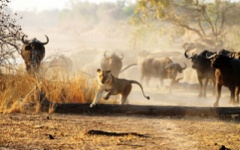
Although the temperature in Zambia stays relatively consistent and warm throughout the year, the best time to visit is in the dry season between July and October. This is, in the main, due to the famous 'black cotton' soil that renders many areas of the country impassable once wet. That being said, there are particular months and areas that go hand in hand, offering exceptional safari and game viewing experiences.
Best time to visit the South and North Luangwa National Park
The best time to go to South Luangwa National Park is the period between middle of June and October when the park is at its driest and the days are warm with plenty of sun. The game viewing by vehicle and foot, is the most reliable during these months as the animals concentrate around the rivers for their primary water source. The drier the season, the easier it is to spot the wildlife as the vegetation and bushes are grazed down. The wet season outside these months make certain areas of the park extremely difficult, or impossible to access. This is because Luangwa’s infamous black cotton soil becomes extremely sticky and wet, making the roads simply impassable, even for safari 4x4’s! Some camps open during the ‘emerald’ season, which lights up the park with vibrant green tones and it is a particularly good time to visit for those interested in birdlife as the park is filled with a beautiful blend of endemic and migratory birds.
Best time to visit the Lower Zambezi National Park
Similar to other areas in Zambia, the best time to visit the Lower Zambezi National Park is in the dry season between June to October. This is when the bush is thinner, the park is drier and the wildlife congregates around the river. During these months, all of the activities are offered including river cruises, canoe trips, fishing and night and day game drives.
The period outside of this window ( November to March ), is the rainy season. The weather during this time is very hot and humid and as the bush is greener and fresher, mosquitos’ numbers are much higher. The roads become bad and sometimes impassable so the scheduled flights into the park stop operating, and the majority of the camps close during this period. That said, this period, also referred to as the ‘emerald season’ has much fewer visitors and for camps that remain open, the rates are usually very low.
Best time to visit Kafue National Park
The best time to visit Kafue is the July to October window which is the height of the dry season. The game viewing is at its best, and most reliable during this time as the animals gather around the remaining water sources. The Busanga Plains, in the northwest area of the park are best visited in the dry season also, perhaps between the months of August and October. The Busanga Plains become completely inaccessible during the wet season.
Best time to visit Liuwa Plain National Park
The period between November to Decembe r is the wet season but this is the regarded the best season to travel as the animal’s migration to the plain during this time (the opposite to the wildlife pattern in most other parks). Many of the animals give birth during this time so there are plenty of newborns and the birding is exquisite. The plains are inaccessible between January and April and game drives are not permitted, so this is a time to avoid. The period from May to October is good as the plains begin to dry up and the conditions for wildlife are good. That said, October can be very hot!
Best time to visit the Victoria Falls
The mighty Victoria Falls marks the boundary between Botswana (just), Zambia and Zimbabwe. This is the place where the waters of the Zambezi River cascade over 100 meters into the “boiling pot” below. A visit to the falls is really a fantastic adventure and something really worth making the effort to do. Again, as with many of the more famous sites in Africa, there is a strong argument to say that you should think of staying away from the busiest areas and benefit from the peace and tranquillity of being further upstream. There is no doubt that a visit to the mighty Victoria Falls at any time of the year will blow you away – the noise, the heat, the moisture, the splash and the overall unique display - but it is worth noting the difference in water volume throughout the months so that you can plan your visit based on the experience it offers.
December to March - The summer period and the height of the rainy season. The weather is hot and as the humidity builds up, thunderstorms often arrive in the afternoon. The Victoria Falls water levels are high and slowly increasing, so activities such as white-water rafting and visiting Livingstone Island Devil’s Pool are usually closed due to safety.
April to June - Many would say that the best time to visit the Falls is the period between April and June which is directly after the area’s summer rains. As a result, the falls have the greatest volume at this time so the amount of water flowing down is simply breath-taking! Visibility from some lookouts can be limited by the abundance of spray and mist so the local name ‘The Smoke That Thunders’ is definitely recognised during this time! Because of high water levels, it is worth noting that white water rafting and Livingstone Island/ Devil’s Pool are closed during these months. A visit to the falls during these months will guarantee to get you soaked… so a poncho or waterproof is a must!
July to August - The water levels of Victoria Falls are lower during these months and as such, the spray is not as intense which gives you greater visibility of the actual falls. At this time, Livingstone Island and the rafting season begins to open as soon as the water drops to a safe level. The only thing to bear in mind is that July and August are peak seasons at Victoria Falls (and Africa in general) due to the summer holidays across the UK and Europe, so be prepared for crowds and high visitor numbers.
September to November - This period is the end of the dry season when the falls water level is at the lowest. On the Zambian side, the falls may almost completely dry up so whilst the visibility is excellent, the experience will definitively be less intense and you certainly will not be wet! From an activity point of view, this period is a great time to visit as white-water rafting is at its peak and Livingstone Island and Devil’s Pool at the edge of the falls are open.
Best time to visit Zambia:
= Yes = No = Maybe
Where to go in Zambia:
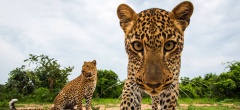
South Luangwa National Park
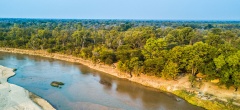
North Luangwa National Park
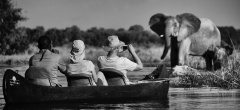
Lower Zambezi National Park
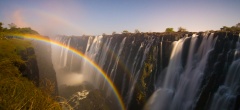
Victoria Falls
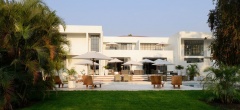
Liuwa Plain National Park
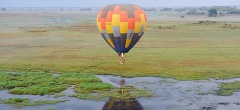
Kafue National Park

Change location
- Call us today from 9am 01993 838 925 01993 838 505 or
- REQUEST A QUOTE
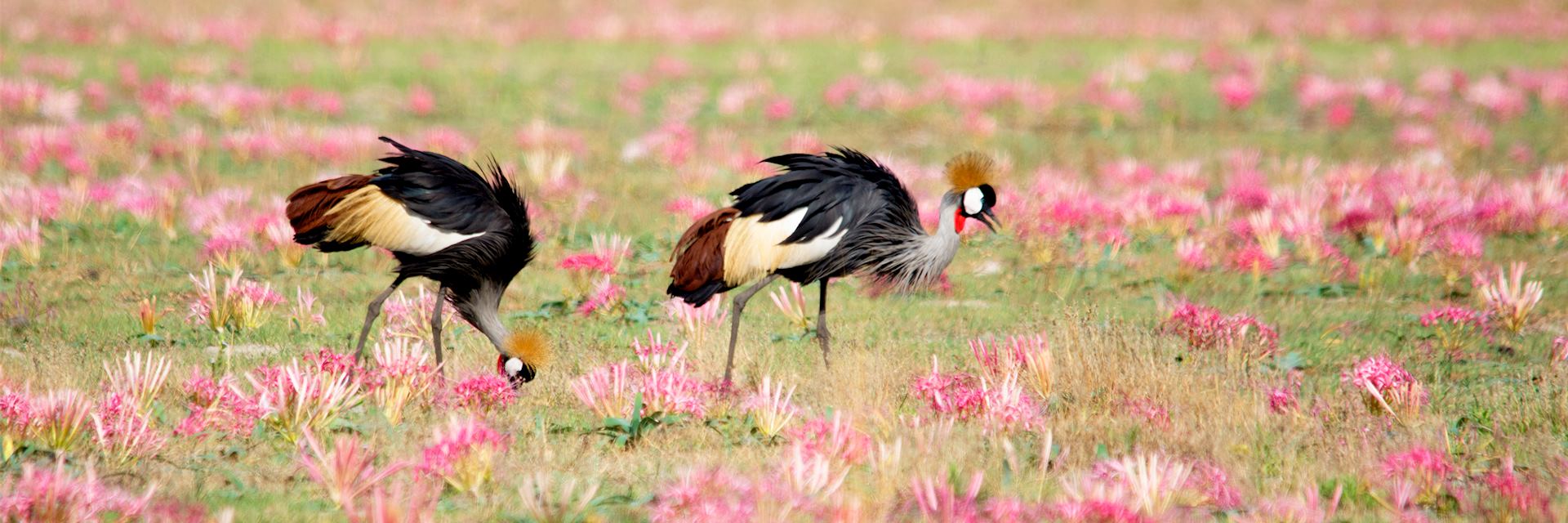
When is the best time to visit Zambia?
- South Luangwa National Park
- Month-by-month
The best time to visit Zambia is during the dry season between June and November. The skies are cobalt blue, the days are hot, and the nights are cool. Temperatures can sit anywhere from 23°C to 36°C across the country. Wildlife-spotting opportunities are plentiful during this time too.
Victoria Falls makes a great option to combine with a safari, but can be visited on its own when the camps are closed briefly in the wet season between January and February. This is when the ‘smoke that thunders’ lives up to its name. This name was coined by the Kalolo-Lozi people, who could see the enormous clouds of mist and spray from a distance.
Rain does fall outside of the wettest months, but this is compensated for by minimal crowds and top-quality birdwatching, plus temperatures remain warm.
- Make an enquiry
- Request a brochure
Month-by-month guide for travelling in Zambia
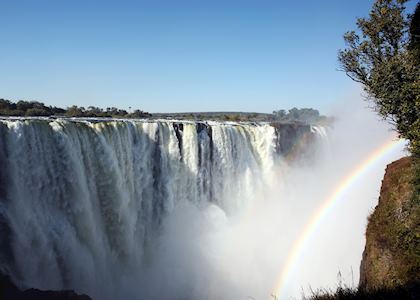
Visiting Zambia in January
January is a good time to see Victoria Falls, but is very wet elsewhere and most camps are closed.
Events & Festivals
- Green Season: this is a great time for birdwatchers and walkers, offering beautiful scenery, flocks of migratory birds and hardly any people, as well as amazing value for money. Read more about Zambia's Green Season.
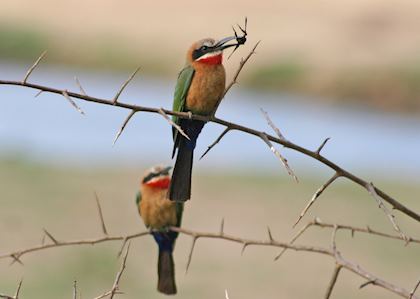
Visiting Zambia in February
It remains wet throughout February, so it's a good time to see Victoria Falls, but only a few camps stay open for boating and walking. It's also a good time for birdwatching.
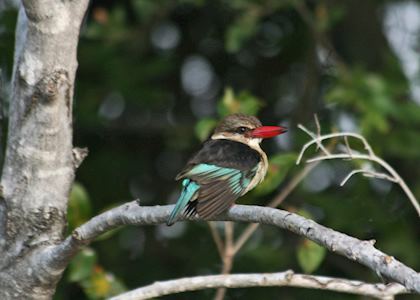
Visiting Zambia in March
Victoria Falls is at its fullest, sending huge amounts of spray into the air and often obscuring the view of the falls themselves. Some camps are open for boating, and birdwatching is excellent. This time of year offers fantastic value for money and camps are really quiet so there are no crowds.
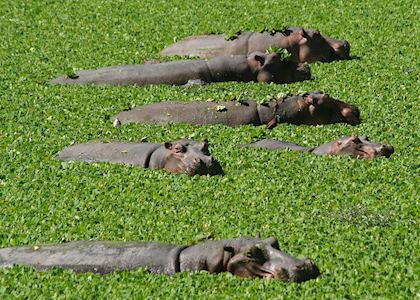
Visiting Zambia in April
The weather starts to dry up a bit, but rain remains a significant feature of April.
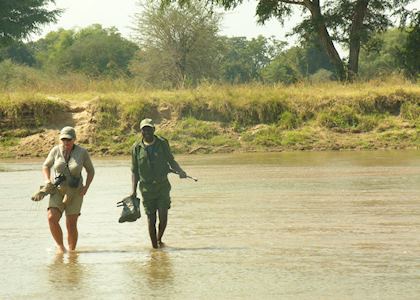
Visiting Zambia in May
A few more camps open up as the rain stops. However, this isn't the best time to embark on a safari as the ground is still sodden, which makes access difficult.

Visiting Zambia in June
The ground starts to dry out after the rains, making June a lovely time to visit. The rivers are still full and the bush is colourful. The camps have opened and are offering excellent deals, while there are few other visitors to compete for space with.
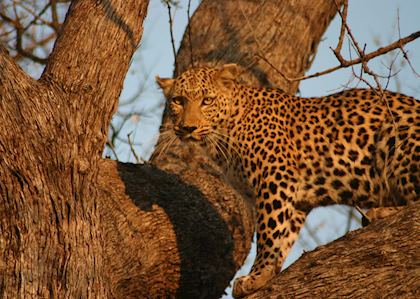
Visiting Zambia in July
Once July hits, Zambia kicks into high gear. Temperatures are rising but it stays chilly in the mornings and evenings. All camps are open in all the national parks, with the South Luangwa the best option for game, the Lower Zambezi for river cruises and fishing, and the Kafue for remote wilderness. Victoria Falls is spectacular, without being overly wet.

Visiting Zambia in August
The hotter weather and drier bush means walking safaris are excellent across the country. This is the prime time of year to combine game viewing and Victoria Falls.
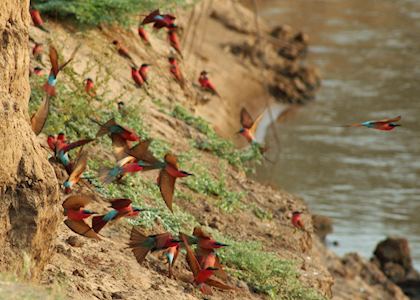
Visiting Zambia in September
September is a superb time to be on safari. Temperatures in the high 20°Cs make the days pleasant, and the water sources are drying up so animals congregate by the rivers and waterholes. Victoria Falls is not as dramatic as earlier months but is still impressive. Meanwhile, carmine bee-eaters arrive in their thousands to nest in the river banks.
- Carmine bee-eaters arrive: This month sees the carmine bee-eaters arrive, with flocks of hundreds nesting in river banks, providing a thrilling spectacle of colour and sound in South Luangwa National Park

Visiting Zambia in October
The heat increases through October and game viewing is best done early and late in the day to escape the midday temperatures.
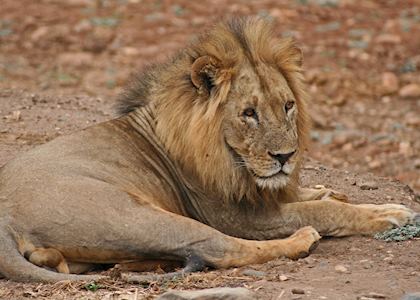
Visiting Zambia in November
The rains arrive in the latter half of the month, but as they are not regular they are not too disruptive and the bonus is seeing dramatic skies with storm clouds building. Temperatures are high and it can be muggy. Some camps close but lots stay open and are great value. You may also be able to see lots of young animals being born.
- Great bat migration: Experience the world's largest mammalian migration as millions of bats fill the skies in a remote part of Zambia.

Visiting Zambia in December
Rains fall regularly, the rivers rise and the bush gets thicker and more colourful. This is an excellent value time to travel.
Zambia Climate Guide
More choice for your safari.
- Inspiration across all our African destinations
- Trip suggestions based on your interests
- Advice on where to safari, when
- Meet our team of safari experts

Travel advice
Practical tips for travelling to Zambia, from social protocols to guidance on money matters, with a link to the latest FCDO travel advice.

Request our brochure
Covering all seven continents, The World Your Way shows you how you can see the world with us. It features trip ideas from our specialists alongside hand-picked stays and experiences, and introduces our approach to creating meaningful travel experiences.
Trip ideas and travel guides for exploring Zambia
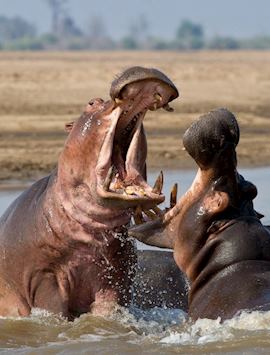
South Luangwa safari
10 days from £6,050pp

Luxury Luangwa & Lake Malawi tour
13 days from £8,405pp

Walking safaris in Zambia
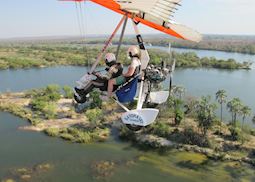
Green Season in Zambia


Best Time to Visit Zambia
![4Y1A0831 (ninara) [flickr.com] 4Y1A0831 (ninara) [flickr.com]](https://www.sunpope.com/wp-content/uploads/reiseziele/4y1a083143154.jpg)
Climate Overview

General & Geography
Climate in zambia.
![visit zambia when 4Y1A0929 (ninara) [flickr.com]](https://www.sunpope.com/wp-content/uploads/reiseziele/4y1a092950657_preview.jpg)
Beach Vacation in February

Best Time to Visit Zambia: Overview
Best time to visit the regions, climate charts zambia.
In the following, you will find climate charts for the regions.
Furthermore, there are some charts you can use for quick comparison of climate between the regions.
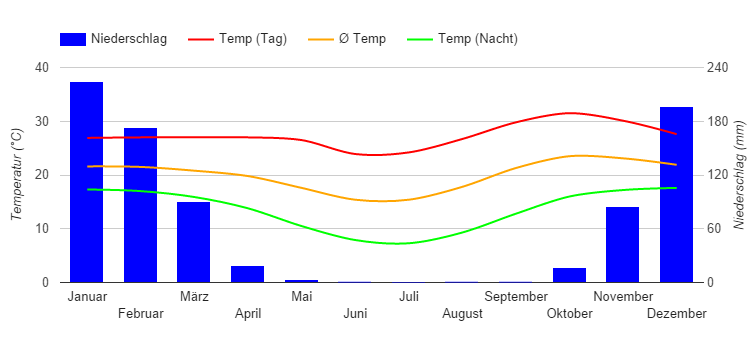
Day Temperatures
Night temperatures, average temperatures, precipitation, hours of sunshine per day.
Source of Data: German Weather Service (Offenbach) and Wikipedia
Climate Tables Zambia
Temperatures, precipitation, sunshine in lusaka (zambia), temperatures, precipitation, sunshine in kasama (zambia), temperatures, precipitation, sunshine in mongu (zambia), popular activities, current weather and forecast.
Important Regions and Cities

Distances to Zambia
Where’s zambia, continent: africa, share your experience and win.
Zambia Experience
Destinations in the vicinity ….
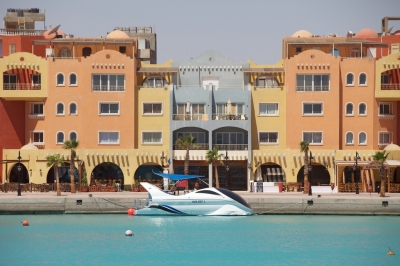
- Imprint / Privacy
- Image Sources
Update April 12, 2024
Information for u.s. citizens in the middle east.
- Travel Advisories |
- Contact Us |
- MyTravelGov |
Find U.S. Embassies & Consulates
Travel.state.gov, congressional liaison, special issuance agency, u.s. passports, international travel, intercountry adoption, international parental child abduction, records and authentications, popular links, travel advisories, mytravelgov, stay connected, legal resources, legal information, info for u.s. law enforcement, replace or certify documents.
Before You Go
Learn About Your Destination
While Abroad
Emergencies
Share this page:
Travel Advisory July 31, 2023
Zambia - level 1: exercise normal precautions.
Reissued with obsolete COVID-19 page links removed.
Exercise normal precautions in Zambia.
Read the country information page for additional information about travel to Zambia.
If you decide to travel to Zambia:
- Enroll in the Smart Traveler Enrollment Program ( STEP ) to receive Alerts and make it easier to locate you in an emergency.
- Follow the Department of State on Facebook and Twitter .
- Follow the U.S. Embassy in Zambia on Facebook and Twitter .
- Review the Country Security Report for Zambia.
- Prepare a contingency plan for emergency situations. Review the Traveler’s Checklist .
- Visit the CDC page for the latest Travel Health Information related to your travel.
Embassy Messages
View Alerts and Messages Archive
Quick Facts
3 blank pages per entry for Zambia
Yellow fever, if entering from a yellow fever endemic country
Embassies and Consulates
U.s. embassy lusaka.
Subdivision694/Stand 100 Kabulonga District Ibex Hill Road Lusaka, Zambia Telephone: +(260) 211-357-000 Emergency After-Hours Telephone: +(260) 211-357-000 or +(260) 966-877-805 or +(260) 761-107-000 Fax: (+260) (0) 211-357-224 Email: [email protected]
Destination Description
Learn about the U.S. relationship to countries around the world.
Entry, Exit and Visa Requirements
A passport is required to enter Zambia. Passports must be valid for at least six months upon arrival and have at least three blank pages upon each entry. Travelers transiting other countries on the way to Zambia, particularly South Africa , should refer to their Country Information pages for additional blank page requirements. U.S. Passport holders do not require a visa to visit Zambia.
You must carry the original or a certified copy of your passport and immigration permit at all times. Certified copies must be obtained from the office that issued the permit. If your passport is lost or stolen, visit the Zambian Department of Immigration to obtain a replacement entry permit before attempting to depart the country.
Departure Tax/Security Charge: U.S. citizens must pay an airport departure tax in local currency. This tax is included in the cost of international flight tickets. For domestic flights, passengers pay a nominal charge in Zambian kwacha prior to entering the departure hall, only for chartered flights.
The U.S. Department of State is unaware of any HIV/AIDS entry restrictions for visitors to or foreign residents of Zambia.
Find information on dual nationality , prevention of international child abduction and customs regulations on our websites.
Safety and Security
Zambia has few major security concerns. Visitors can avoid criminal activity by utilizing common sense measures provided below.
Political activity, especially during national and local elections, can lead to civil unrest and low-level violence. Spontaneous demonstrations occasionally occur and are often exacerbated by police action. Even demonstrations intended to be peaceful can quickly turn confrontational and escalate into violence. To stay safe, you should:
- avoid large crowds, demonstrations, and political gatherings
- follow media coverage of local events
- be aware of your surroundings at all times
- exercise caution when traveling throughout the country
- avoid walking alone in the downtown areas, high-density residential compounds, public parks, and poorly lit areas—especially at night.
Crime: The most commonly reported crimes committed against Westerners in Lusaka are non-violent confrontations characterized as crimes of opportunity (theft of unattended possessions in public places or hotel rooms, confidence scams). Pickpockets operate in crowded markets and on public transportation, and visitors have reported snatch attacks of bags and smartphones on busy city streets as well as smash-and-grabs of valuables from vehicles idling in slow traffic and from parked cars. Other crimes, including thefts, violent attacks, including home invasions/robberies, and sexual assaults have occurred on many occasions. Victims are, on occasion, followed from banks, nightclubs, and ATMs and robbed at gunpoint, on the street, or upon arrival at their residence. Walking alone is not advisable in the downtown areas, high-density residential neighborhoods referred to locally as a “compound”, public parks, and other poorly illuminated areas, especially at night.
Be aware of:
- Pick-pockets operating in crowded markets and on public transportation;
- Snatch attacks of bags and smart phones on busy city streets;
- “Smash and grab” of valuables from vehicles idled in traffic and from parked cars;
- Thefts, violent attacks, home invasions/robberies; and
- Recent incidents involving sexual assaults.
Demonstrations occur frequently. They may take place in response to political or economic issues, on politically significant holidays, and during international events.
- Even demonstrations intended to be peaceful can turn confrontational and possibly become violent.
- Avoid areas around protests and demonstrations.
- Check local media for updates and traffic advisories.
International Financial Scams: See the Department of State Department of State and the FBI pages for information.
Internet romance and financial scams are prevalent in Zambia. Scams are often initiated through Internet postings/profiles or by unsolicited emails and letters. Scammers almost always pose as U.S. citizens who have no one else to turn to for help. Common scams include:
- Romance/Online dating
- Money transfers
- Contracts with promises of large commissions
- Work permits/job offers
Border Areas: Travelers should not drive off-road or in remote areas near the borders with the Democratic Republic of the Congo (DRC) and Angola because of the danger of undetected land mines and unexploded ordnance. If you must travel to these areas, you should drive in convoys and carry satellite telephones. Parts of the DRC border area can be plagued with unrest and/or armed criminal elements. See the Country Information pages for the DRC and Angola for additional information.
Victims of Crime:
U.S. citizen victims of sexual assault are encouraged to contact the U.S. Embassy for assistance. Report crime to the local police at 991 or 112 and contact the U.S. Embassy at + (260) 011-357-000 or + (260) 966-050-123.
Remember that local authorities are responsible for investigating and prosecuting crime.
See our webpage on help for U.S. victims of crime overseas .
- Help you find appropriate medical care
- Assist you in reporting a crime to the police
- Contact relatives or friends with your written consent
- Provide general information regarding the victim’s role during the local investigation and following its conclusion
- Provide a list of local attorneys
- Provide our information on victim’s compensation programs in the U.S .
- Provide an emergency loan for repatriation to the United States and/or limited medical support in cases of destitution
- Help you find accommodation and arrange flights home
- Replace a stolen or lost passport
Domestic Violence: U.S. citizen victims of domestic violence may contact the Embassy for assistance.
The legal age of marriage in Zambia is 16 for boys and girls with parental consent and 21 without consent. The law also prohibits Female genital mutilation or cutting (FGM/C) for women and girls and criminalizes rape and other sexual offenses, and courts have discretion to sentence convicted rapists to life imprisonment with hard labor. The law however does not include provisions for spousal rape. The penal code criminalizes domestic violence between spouses and among family members living in the same home. It also provides for prosecution of most crimes of gender-based violence, and penalties for conviction range from a fine to 25 years imprisonment, depending on the severity of injury and whether a weapon was used.
Tourism : The tourism industry is unevenly regulated, and safety inspections for equipment and facilities do not commonly occur. Hazardous areas/activities are not always identified with appropriate signage, and staff may not be trained or certified either by the host government or by recognized authorities in the field. In the event of an injury, appropriate medical treatment is typically available only in/near major cities and there are no trauma facilities in the country. First responders are generally unable to access areas outside of major cities and to provide urgent medical treatment. U.S. citizens are advised to purchase medical evacuation insurance .
Local Laws & Special Circumstances
Criminal Penalties: You are subject to local laws. If you violate local laws, even unknowingly, you may be expelled, arrested, or imprisoned. Individuals establishing a business or practicing a profession that requires additional permits or licensing should seek information from the competent local authorities, prior to practicing or operating a business.
Furthermore, some laws are also prosecutable in the United States, regardless of local law. For examples, see our website on crimes against minors abroad and the U.S. Department of Justice website.
Arrest Notification: If you are arrested or detained, ask police or prison officials to notify the U.S. Embassy immediately. See our webpage for further information.
Counterfeit and Pirated Goods: Although counterfeit and pirated goods are prevalent in many countries, they may still be illegal according to local laws. You may also pay fines or have to give them up if you bring them back to the United States. See the U.S. Department of Justice website for more information.
Drugs : Possession of small quantities of an illegal substance can constitute drug trafficking in Zambia. A list of controlled substances in Zambia is included in the Local Resources section of the U.S. Embassy Lusaka's webpage . When visiting Zambia, you should consider carrying any prescribed medications in their original bottles with a doctor’s prescription.
Wild Animal Products: It is illegal to purchase tortoise shells, rhino horns, elephant ivory, or any items made out of these materials. Other wildlife products, such as hippo teeth, crocodile teeth or skins, flat skins, horns, or animal bones, should only be purchased from animal product vendors licensed with Zambia’s Department of National Parks and Wildlife, which provide certification of purchase. Failure to produce a valid and legitimate certificate for these prescribed trophies can result in a five-year minimum prison sentence. Travelers must present the items and certification of purchase in person to Department of National Parks and Wildlife officials within 45 days of departure to obtain an export permit. Permits for items derived from CITES regulated species, such as hippo or crocodile, may take a number of days to obtain, may include additional fees, and may require an import permit from a destination country. Wildlife products with no export permit will be confiscated upon departure and the Government of Zambia will prosecute offenders to the fullest extent of the law with penalties ranging from large fines to minimum five-year prison sentences. It is illegal to export game meat in any form: dried, processed, or raw.
Faith-Based Travelers: See our following webpages for details:
- Faith-Based Travel Information
- International Religious Freedom Report – see country reports
- Human Rights Report – see country reports
- Hajj Fact Sheet for Travelers
- Best Practices for Volunteering Abroad
LGBTQI+ Travelers: Zambian law criminalizes consensual same-sex sexual activity and penalties for conviction of engaging in “acts against the order of nature” are 15 years to life imprisonment. The lesser charge of “gross indecency” carries penalties of up to 14 years imprisonment.
LGBTQI+ persons in particular are at risk of societal violence due to prevailing prejudices, misperceptions of the law, lack of legal protections, and inability to access health services.
See our LGBT QI+ Travel Information page and section 6 of our Human Rights report for further details.
Travelers with Disabilities: The law in Zambia prohibits discrimination against persons with physical, sensory, intellectual, or mental disabilities, but the law is not effectively enforced. The Zambia Agency for Persons with Disabilities was created to promote awareness relating to the prevention of disabilities and the care of persons with disabilities; to cooperate with other government ministries in providing preventive, educational, training, employment, and rehabilitation services for persons with disabilities. Cultural attitudes toward disability vary, but in general social acceptance of persons with disabilities in public is not as prevalent as in the United States. Despite some improvements in largely urban areas, physical accessibility to services remains a pervasive problem across most of Zambia. The most common types of accessibility may include accessible facilities, information, and communication/access to services/ease of movement or access. Expect accessibility to be limited in public transportation, lodging, communication/information, and general infrastructure. Contact the US Embassy in Zambia to receive a list of providers.
Students: See our Students Abroad page and FBI travel tips.
Women Travelers: See our travel tips for Women Travelers .
Private medical clinics in major cities provide reasonable care, but major medical emergencies usually require medical evacuation to South Africa, Europe, or the United States. The nearest air ambulances are based in South Africa. Government hospitals and clinics are often understaffed and lack supplies. Basic medical care outside of major cities is extremely limited. Doctors and hospitals expect immediate cash payment for health services.
For emergency services in Zambia, dial 999 for General Emergency, 991 for Police and 993 for Fire.
Ambulance services are:
- not widely available and training and availability of emergency responders may be below U.S. standards.
- not equipped with state-of-the-art medical equipment.
- not staffed with trained paramedics and often have little or no medical equipment.
- Injured or seriously ill travelers may prefer to take a taxi or private vehicle to the nearest major hospital rather than wait for an ambulance.
We do not pay medical bills. Be aware that U.S. Medicare does not apply overseas.
Medical Insurance: Make sure your health insurance plan provides coverage overseas. Most care providers overseas only accept cash payments. See our webpage for more information on insurance overseas. Visit the U.S. Centers for Disease Control and Prevention for more information on type of insurance you should consider before you travel overseas.
We strongly recommend supplemental insurance to cover medical evacuation.
Always carry your prescription medication in original packaging, along with your doctor’s prescription. Check the Dangerous Drugs Act , or consult the Zambia Medicines Regulatory Authority to ensure the medication is legal in Zambia.
The following diseases are prevalent:
- African trypanosomiasis
- Hepatitis A
- Hepatitis B
- African Tick-Bite Fever
- Chikungunya
- Tuberculosis
- Rift River Valley
- Ross River Virus Disease
- Leptospirosis
- Schistomsomiasis
Use the U.S. Centers for Disease Control and Prevention recommended mosquito repellents and sleep under insecticide-impregnated mosquito nets. Chemoprophylaxis is recommended for all travelers even for short stays.
HIV/AIDS : Zambia has a very high burden of HIV. Travelers are generally at low risk for getting HIV but certain practices such as having unprotected sex or sharing needles with people who are or might be infected with HIV can significantly increase the risk of HIV transmission. For more information on what you can do before and during travel to prevent HIV infection please visit the U.S. Centers for Disease Control and Prevention website.
There are shortages of medicine and medical supplies throughout Zambia.
Visit the U.S. Centers for Disease Control and Prevention website for more information about Resources for Travelers regarding specific issues in Zambia.
Vaccinations: Be up-to-date on all vaccinations recommended by the U.S. Centers for Disease Control and Prevention.
Further health information:
- World Health Organization
- U.S. Centers for Disease Control and Prevention (CDC)
Air Quality: Visit AirNow Department of State for information on air quality at U.S. Embassies and Consulates.
The U.S. Embassy maintains a list of doctors and hospitals here under "local resources." We do not endorse or recommend any specific medical provider or clinic.
Health facilities in general
- Public medical clinics lack basic resources and supplies.
- Private hospitals usually require advance payment or proof of adequate insurance before admitting a patient.
- Patients bear all costs for transfer to or between hospitals.
Pharmaceuticals
- Exercise caution when purchasing medication overseas. Pharmaceuticals, both over the counter and requiring prescription in the United States, are often readily available for purchase with little controls. Counterfeit medication is common and may prove to be ineffective, the wrong strength, or contain dangerous ingredients. Medication should be purchased in consultation with a medical professional and from reputable establishments.
- U.S. Customs and Border Protection and the Food and Drug Administration are responsible for rules governing the transport of medication back to the United States. Medication purchased abroad must meet their requirements to be legally brought back into the United States. Medication should be for personal use and must be approved for usage in the United States. Please visit the U.S. Customs and Border Protection and the Food and Drug Administration websites for more information.
Assisted Reproductive Technology and Surrogacy
- If you are considering traveling to Zambia to have a child through use of assisted reproductive technology (ART) or surrogacy, please see our ART and Surrogacy Abroad page .
Water Quality
- In many areas, tap water is not potable. Bottled water and beverages are generally safe, although you should be aware that many restaurants and hotels serve tap water unless bottled water is specifically requested. Be aware that ice for drinks may be made using tap water.
Adventure Travel
- Visit the U.S. Centers for Disease Control and Prevention website for more information about Adventure Travel .
Travel and Transportation
Road Conditions and Safety: Vehicle travel is extremely hazardous under normal conditions but particularly at night and in inclement weather.
When traveling in Zambia, please be aware:
- Secondary roads are not well maintained; use major roads whenever possible.
- Most roads do not have shoulders or sidewalks and are poorly lit.
- Pedestrians and livestock use the roadways.
- Passing another vehicle is dangerous given the general condition of roads.
- Lookout for tree branches or other debris which local drivers often place behind their cars to indicate a breakdown or trouble.
- Cars with non-functioning headlights and taillights are a common hazard.
- Night driving is discouraged.
- There are no emergency services for stranded or injured drivers.
- Auto accident victims are vulnerable to theft by those pretending to be helpful.
Traffic Laws:
- Vehicles drive on the left side of the road.
- Vehicles in traffic circles travel clockwise.
- It is illegal to turn left on a red light.
- Splashing a pedestrian as you drive through water is a traffic violation.
- You should come to a stop and pull to the side of the road if you hear sirens indicating an emergency vehicle or official motorcade.
- Use of seat belts is mandatory, as are helmets for motorcyclists.
- A child's seat is not mandatory by law but is recommended.
- It is illegal to use a cell phone while driving and the minimum fine if caught is equivalent to $60.
- The speed limit in Lusaka is 30 mph/50 km and 60 mph/100 km outside of city limits, unless otherwise indicated.
- If you are stopped by police and asked to pay a fine, you should obtain an official receipt or be directed to the nearest police station where you can make payment.
- Drivers under the influence of alcohol who are involved in accidents are tested at Lusaka's University Teaching Hospital (UTH) and then taken to court.
Public Transportation: City traffic is comprised mostly of cars and privately operated minibuses; motorcycles are rare. Some relatively nice buses travel between Lusaka and Livingstone and the Copperbelt. Minibuses serve as the primary means of intra-city travel in Zambia but are often overcrowded, poorly maintained, and seldom punctual.
See our Road Safety page for more information.
Aviation Safety Oversight: As there is no direct commercial air service to the United States by carriers registered in Zambia, the U.S. Federal Aviation Administration (FAA) has not assessed the Government of the Republic of Zambia’s Civil Aviation Authority for compliance with International Civil Aviation Organization (ICAO) aviation safety standards. Further information may be found on the FAA’s safety assessment page.
Please see Fact Sheet for this country/area.
For additional travel information
- Enroll in the Smart Traveler Enrollment Program (STEP) to receive security messages and make it easier to locate you in an emergency.
- Call us in Washington, D.C. at 1-888-407-4747 (toll-free in the United States and Canada) or 1-202-501-4444 (from all other countries) from 8:00 a.m. to 8:00 p.m., Eastern Standard Time, Monday through Friday (except U.S. federal holidays).
- See the State Department’s travel website for the Worldwide Caution and Travel Advisories .
- Follow us on Twitter and Facebook .
- See traveling safely abroad for useful travel tips.
Review information about International Parental Child Abduction in Zambia . For additional IPCA-related information, please see the International Child Abduction Prevention and Return Act (ICAPRA) report.
- Follow us on Twitter and Facebook .
Review information about International Parental Child Abduction in Zambia . For additional IPCA-related information, please see the International Child Abduction Prevention and Return Act ( ICAPRA ) report.
Travel Advisory Levels
Assistance for u.s. citizens, learn about your destination, enroll in step.

Subscribe to get up-to-date safety and security information and help us reach you in an emergency abroad.
Recommended Web Browsers: Microsoft Edge or Google Chrome.
Make two copies of all of your travel documents in case of emergency, and leave one with a trusted friend or relative.
Afghanistan
Antigua and Barbuda
Bonaire, Sint Eustatius, and Saba
Bosnia and Herzegovina
British Virgin Islands
Burkina Faso
Burma (Myanmar)
Cayman Islands
Central African Republic
Cote d Ivoire
Curaçao
Czech Republic
Democratic Republic of the Congo
Dominican Republic
El Salvador
Equatorial Guinea
Eswatini (Swaziland)
Falkland Islands
France (includes Monaco)
French Guiana
French Polynesia
French West Indies
Guadeloupe, Martinique, Saint Martin, and Saint Barthélemy (French West Indies)
Guinea-Bissau
Isle of Man
Israel, The West Bank and Gaza
Liechtenstein
Marshall Islands
Netherlands
New Caledonia
New Zealand
North Korea (Democratic People's Republic of Korea)
Papua New Guinea
Philippines
Republic of North Macedonia
Republic of the Congo
Saint Kitts and Nevis
Saint Lucia
Saint Vincent and the Grenadines
Sao Tome and Principe
Saudi Arabia
Sierra Leone
Sint Maarten
Solomon Islands
South Africa
South Korea
South Sudan
Switzerland
The Bahamas
Timor-Leste
Trinidad and Tobago
Turkmenistan
Turks and Caicos Islands
United Arab Emirates
United Kingdom
Vatican City (Holy See)
External Link
You are about to leave travel.state.gov for an external website that is not maintained by the U.S. Department of State.
Links to external websites are provided as a convenience and should not be construed as an endorsement by the U.S. Department of State of the views or products contained therein. If you wish to remain on travel.state.gov, click the "cancel" message.
You are about to visit:
- Destinations
Wealth of Wildlife & Wonders
Why Visit Zambia?
Zambia is an incredible destination yet is traditionally not as high as it deserves to be on the wish list of most travellers when planning a trip to Southern Africa. It really offers a world-class safari experience. Zambia offers a unique and absorbing African adventure. Those who do make the decision to visit will be awestruck by the wealth of wildlife - whether on a walking safari, river cruise or game drive - and will leave with a kaleidoscope of memories.
South Luangwa National Park is the country's premier game reserve. Covering 9050 sq km of pristine wilderness, it contains an incredible density and diversity of wildlife, including predators and prey alike, with 60 species of animals and 400 species of birds. It also offers amazing walking safaris where you can get up close with Africa's wild animals and camp out under the stars after a day in the bush.
Kafue National Park is the country's biggest reserve, and one of the largest in the world. It is a fertile eco-system teeming with antelope, hippos and predators congregating along the Busanga floodplains. Lower Zambezi offers game viewing potential via sunset cruise, replete with the obligatory gin and tonic of course, or get paddling on a canoe safari mid the mighty Zambezi River. And most travellers will spend a night in Lusaka at the beginning or end of their trip, a chaotic, crowded but charming African city.
Zambia's premier attraction is undoubtedly Victoria Falls , which it shares with neighbouring Zimbabwe. You can stay in either country but many travellers head to Zambia these days. One of the world's seven natural wonders, the Falls are simply spectacular and when in full flood are the largest falling curtain of water in the world.
In Africa, It's Not About What You Know, But Who You Know.
We've partnered with the best to ensure you get front row seats at the best possible price., frequently asked questions.
We've taken the liberty to answer everything you may need to know about visiting Zambia
When is the best time to visit Zambia? That's a question we're getting a lot. And with good reason! Because Zambia is a tropical country, it does not have a distinct summer and winter as such but rather a rainy and dry season.
From November to March , there is a lot of rainfall and this means the national parks are lush and green. The game watching is not as good due to the plentiful water supply and the dense bush but the birding is spectacular. This time of year is also known as the Emerald Season, due to the bright green colours.
Game viewing is at its best from June onwards, during the dry season.
September and October offer the optimal wilderness experience as animals congregate around waterholes, rivers and lakes.
Having said that, game viewing is still pretty good all-year-round and it often depends on what exactly you want to see.
Victoria Falls are at their most mighty in April and May, just after the rains have finished. In fact, the Falls are the largest curtain of falling water in the world (when in full flood). In the dry season, the levels may be lower but there is less spray so you have better panoramic views and you can explore the surroundings more fully.
A Zambia luxury safari’s cost depends on several factors. These include but are not limited to where you decide to stay, availability, seasonality, and the activities you’re interested in. All our safaris are tailor-made to suit your specific needs and wants while also taking into account who you’re travelling with, the time of year, etc.
However, as a rough guideline, you can expect to pay anything from $500 to $3,000 per person per night.
There's a lot of different activites and sites to discover in Zambia. The country is best known for its access to Victoria Falls, which it shares with bordering Zimbabwe. Here you can partake in numerous adrenaline-fueled activities ranging from whitewater rafting to bungee jumping. It also has several national parks where you can go on safari to see a diversity of animals and birds. Let our Travel Experts know what your interests are and they will plan the perfect Zambia luxury safari for you.
Most visitors to Zambia will either arrive in Lusaka or Livingstone. Being the capital, Lusaka is served by a number of international airlines, with many travellers flying here directly from Johannesburg (South Africa), Nairobi (Kenya) or Dar es Salaam (Tanzania). Emirates, Kenya Airways and Ethiopian Airlines all fly directly to Lusaka.
Flights from America can be arranged with either British Airways or South African Airways, via London or Johannesburg respectively. From the UK, there are four flights a week direct from Gatwick Airport to Lusaka and from Australia, Qantas flies to Harare in Zimbabwe and Johannesburg in South Africa, with connecting flights available to Lusaka. European airlines such as KLM, Air France and Lufthansa also fly to Lusaka, via either Harare or Johannesburg.
Daily flights operate between Johannesburg Airport and Livingstone Airport. The flight is about 90 minutes in duration and Livingstone Airport is about 20 minutes drive from the Falls and your dream Zambia luxury safari.
There is also a direct Kruger National Park to Livingstone flight which allows guests to combine a Kruger safari with Victoria Falls on the same day, which would not be possible otherwise.
Yes. Zambia is a malaria area. We are not doctors, so please note that you should always speak to your doctor about malaria prevention before travelling. However, on that note, it is entirely possible to have a safe, malaria-free holiday in Africa by using prophylactic drugs.
Tip 1: Repel the Mosquitoes The female mosquito responsible for transmitting malaria is a silent mossy, so you will have to ensure you repel them. They can strike at any time of day but are most active at dusk as well as dawn. Always wear repellent as well as long-sleeved shirts and long trousers in the evenings and mornings. Please note that clothes alone won't protect you, as they can bite through the material. Most of our lodges will have screened windows and doors, air conditioning systems, and mosquito nets to further protect you.
Tip 2: ALWAYS Take Anti-Malaria Tablets The most important thing you can do to protect yourself against malaria is taking Prophylactic tablets. Please note that you have to speak to your doctor before taking these tablets to ensure that you take the right one, as well as the correct dosage when entering the malaria area.
Top 3: Keep an Eye Out for Symptoms and Finish Your Course of Meds If you start to notice any flu-like symptoms, you must get a malaria test to be safe and catch it early because malaria reacts well to early treatment. Also, don't stop taking your meds until the course is complete!
Some interesting facts about Zambia include:
There are 20 National Parks throughout the country and offers some of the best game viewing in Africa - without all the crowds you’ll find in more popular safari destinations
There are over 73 dialects in Zambia, but English is the official language
The currency is called the Kwacha (ZMK) - though USD is widely accepted
Roads are maintained fairly well, but some areas will require the use of a 4x4
Most travellers require a visa to enter Zambia. Travellers are advised to contact their nearest Zambian embassy or consulate to see if they need one or not.
How long will it take to issue my visa? Single-entry visas are available and can be issued on the day of arrival at all borders and airports. For double- or multiple-entry visas, however, you will have to apply before you travel. Visas to Zambia are usually processed in about 5 to 10 work days. Certain nationals from certain countries are eligible for the KAZA UNI-VISA which will be issued at certain ports of entry upon arrival in Zambia. The KAZA UNIVISA costs USD 50 and is valid up to 30 days in any given period of 12 months, as long as the holder remains within Zambia and Zimbabwe. It also covers those who visit Botswana for day-trips through Kazungula Borders.
What are the visa requirements? To apply for a Zambian visa in advance, you will need the following documents: a passport that is valid for 6 months, two signed Zambian visa application forms, 2 passport photos, a letter of invitation, and a flight itinerary or airline tickets as proof of departure.
For how long should my visa be valid? A tourist visa to Zambia will be valid for 90 days while a visa for business travellers will be valid for 30 days. You also have the option of applying for a day-tripper visa which will allow you to be in Zambia for no more than 24 hours. The KAZA UNI-VISA is valid for 30 days.
Note: The UNIVISA was reinstated as of 21 December 2016. It allows visitors to travel between Zimbabwe and Zambia as frequently as they wish while the visa is valid. The cost of a UNIVISA is US$50.
It is recommended to get an eVisa prior to arrival. This means that queues are reduced and that time spent at airports is minimised.
Please ensure that you verify this information independently with the relevant embassy, high commission or consulate as your consultant cannot be held liable for any errors.
If you are planning a self-driving trip through Zambia, there are some rules that you will need to bear in mind. People drive on the left-hand side of the road and you will have to be in possession of an international driver’s license and be at least 23-years old. Foreign licenses may also be fine – as long as they are in English.
The quality of the roads in Zambia is not particularly good. Main highways tend to have potholes and gravel roads in national parks and rural areas should preferably be avoided in rainy seasons. Driving in rural areas at night is not advised as wild and domestic animals tend to stray into the road.
That said, travellers are generally advised not to self-drive through Zambia. Most hotels and lodges can arrange a local guide or driver to get you around.
Before travelling to Zambia, make sure you have bought the correct travel adaptor. The Type C, Type D, and Type G plugs are all accepted as the standard electric plugs in Zambia. The Type C plus (commonly known as the EuroPlug) is a two-pinned unearthed plug. The Type D plug has three large round pins in a circular configuration and is often referred to as the Old British Plug. The Type G Plug is the British three-pin rectangular blade plug and is commonly known as the 13-amp plug. While power cuts are frequent in Zambia, most hotels and lodges will be equipped with a generator.
Zamnet is the country’s biggest internet service provider. While internet access in Zambia can be quite patchy, most hotels have Wi-Fi set up for their guests and for the conference facilities. Most urban areas also have plenty of internet cafes. Travellers who wish to readily access the internet are advised to travel with a device such as a laptop or a tablet.
MTN and Airtel are the two major mobile-service providers in Zambia and SIM cards can readily be bought throughout the country. International service providers do offer roaming agreements if this is your preferred option. Cellphone reception is good, albeit patchier in rural areas.
Most lodges and hotels will post postcards on your behalf so a visit to the local post office will not be necessary.
If you are planning a trip to Zambia, here are some helpful hints you need to know before you go:
-If you’re visiting Victoria Falls in the rainy season, make sure you pack rain boots and a raincoat - or risk getting soaked
-Zambia still has not fully embraced homosexuality and we ask that homosexual couples be respectful of the country’s regulations by withholding from and minimising public displays of affection
-Public displays of affection – regardless of your sexual orientation – are frowned upon
Before going on a trip, it is important to consult your doctor, and take out comprehensive travel and health insurance that will cover all of your intended activities while on holiday in Zambia. Here are some helpful health hints to bear in mind:
-Zambia is a malaria area and travellers should take the necessary precautions, before embarking on their trip
-The risk of malaria is strongest in densely populated areas during the rainy season. Remember to pack and apply insect repellent, to cover up with full-length clothing, and to spray your room with insecticide before going to sleep
-The sun is very harsh in Zambia and you are advised to wear sunscreen and a hat – especially at midday
-On hot days, stay hydrated by drinking plenty of water and staying in the shade
-Water at hotels and lodges are generally filtered and safe to drink. If you’re venturing off the beaten track, be advised to preferably boil water before using it
If you’re planning a trip to Zambia, these are the most important money matters you need to know before you go:
-The Zambian currency is the Kwacha (ZMW). One Kwacha consists of 100 ngwee. Banknotes are in denominations of K100, 50, 20, 10, 5, and 2. Coins are in denominations of K1 and 50, 10, and 5 ngwee
-While foreign currency is widely accepted throughout Zambia, this may be a short-term reprieve so certain hotels and lodges (particularly Wilderness Safaris) prefer to use Kwacha for transactions. Visa (more so than American Express and MasterCard) is accepted at most hotels, lodges, and restaurants. When paying is foreign currency change is often given in Kwacha.
-Upon arrival in Zambia, you can exchange your currency at authorised banks and bureaux de change
-Tourists over the age of 18 may import the following items into Zambia without incurring customs duty: 400 cigarettes, 1.5L of spirits, and 2.5L of wine, personal goods to the value of US$1000
-Local currency and foreign currencies exceeding USD 5000 (or equivalent) must be declared when entering or leaving the country.
-Bank hours vary but – for the most part – banks are open from 08:30 to 14:30 on weekdays and from 08:25 to 10:30 on Saturdays
Why book with us?

We've detected unusual activity from your computer network
To continue, please click the box below to let us know you're not a robot.
Why did this happen?
Please make sure your browser supports JavaScript and cookies and that you are not blocking them from loading. For more information you can review our Terms of Service and Cookie Policy .
For inquiries related to this message please contact our support team and provide the reference ID below.
- Skip to content
The Cornell Lab of Ornithology builds the eBird global platform for communities and partners around the world to advance data-driven science, education, and conservation.
Change Region
- News & Resources
- Recent Checklists
- Trip Reports
- Illustrated Checklist
- Hotspot Map
- Rare Bird Alerts
- Printable Checklist
A Redshank and a Waterbird Count at Huntley Farm, Chisamba, in January 2024
Available languages.

One of the real perks of living next door to Fringilla Lodge these days is that it takes me just 10 minutes to get to Huntley Farm. This is one of the best-known birding localities in central Zambia, for very good reasons. BirdWatch has been organising bird outings and conducting half-yearly waterbird counts here for many years now. It has also become my “homepatch” in the last 3 years, which I try to visit at least weekly in the migrant season – when home.
In contrast to the rest of the 2023-2024 ‘wet season’, there were very heavy rains during the last week of December. Huntley’s upper central dam and Wangwa Dam were overflowing, washing parts of the main road away, and creating excellent waterbird conditions. The middle of the central dams quickly filled with Lesser Moorhens and waders. I made an effort to visit the site frequently in January, which paid off. On 11 January, while birding with a few visiting fellow Dutchmen (Boena van Noorden, Wil Beeren, Paul Voskamp and Jan Biemans), I suddenly picked up on what unmistakably was a Redshank, standing out between the many Wood Sandpiper and Ruff despite being superficially rather similar. Picking up on it was easier than getting the other guys to appreciate the significance since this is a common bird in much of Europe. The rather uniform upper- and underparts form possibly the most useful fieldmark. The straight red bill, red legs and white wedge in the wing confirmed the identification. The bird would prove rather cooperative, in terms of it staying put at the dam up till 28 January, being often hidden in tall grass but calling and flying frequently. This allowed the many participants of the BirdWatch birdwalk on 21 January, and a few others on other dates, to connect with the bird, dramatically growing the member numbers of the “Redshank Club” (a term coined by Damian).
There was a flurry of records in the 1970s and 1980s following drought further north. Since 1993, however, we only had two confirmed Zambian records. Damian Newmarch noticed a bird at Kafue Fisheries on 18 October 2015. Wouter van Spijker found one at Clipper Fish Farm on 25 October 2023, together with Alastair Newton. There are many more claims, but available images suggest these were all male Ruff which can look pretty similar, with overlap in (orange-)red colouration of legs and bill. The perfectly straight, dark-tipped bill and white wing wedge of Redshank are however diagnostic, as is the call.
Redshank Tringa totanus is generally listed as “Common Redshank” but this obviously doesn’t make sense in many parts of the world including Zambia. At least two populations visit Africa. Nominate totanus (“European Redshank”) breeds in Europe and is a common visitor in Africa north of the equator. Race ussuriensis (“Siberian Redshank”) breeds widespread in Siberia, Mongolia and parts of China, with non-breeding areas including the Middle East and northeastern Africa. We had no information on the races that have been recorded in Zambia so far. Images of the Huntley bird are however a good match for totanus , while the Clipper bird has clearly different proportions with much longer legs and heavier bill base, and is paler in plumage, matching ussuriensis . This is a great illustration of how Zambia lies on the division between the flyways of western and eastern Africa! There are also some other races breeding further east in Asia, but identification is difficult and occurrence much less likely. Spotted Redshank Tringa erythropus also occurs in Africa, including (rarely) south of the equator. There’s a single, old report from Zambia, at Busanga Plains. They have longer legs, neck and bill than ussuriensis, but are easily distinguished on call and the absence of a white wing wedge.
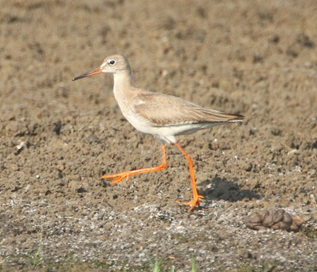
“Siberian” Redshank Tringa totanus ussuriensis at Clipper Fish Farm, Livingstone, 25 October 2023 (Wouter van Spijker).
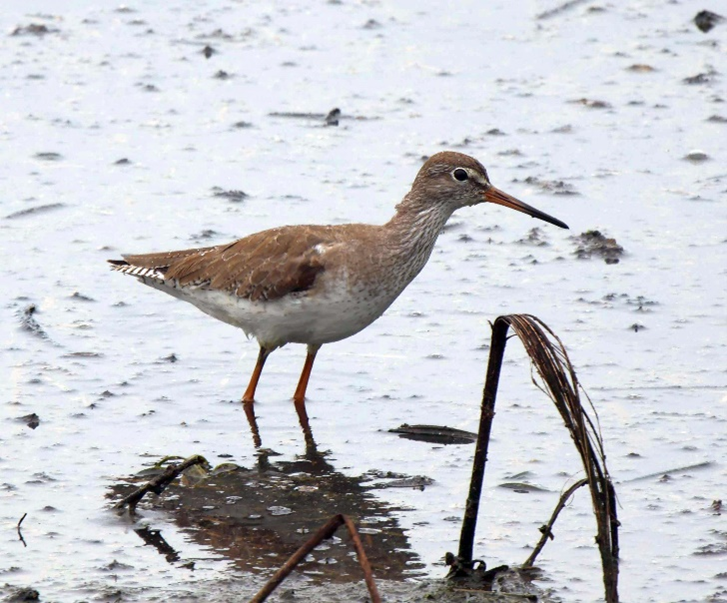
“European” Redshank Tringa totanus totanus at Huntley Farm, 11 January 2024 (Frank Willems).
I ended up only doing the January waterbird count on 31 January…. By which time the Redshank had disappeared! It was nevertheless a very enjoyable count with 6429 birds of 55 species counted, including some raptors and kingfishers and the like. Marabou is remarkably common here, with 1368 counted, though was outnumbered by Cattle Egret (2475). Lesser Moorhen was abundant with 234 counted, which doesn’t include the hundreds or thousands that will have been hiding in the flooded grasslands and reeds. A total of 125 Southern Pochard is notable, but this species and other ducks only peak here in about April when there might be some 500, and Knob-billed Duck numbers in the many thousands. For that, the timing of both the January and July counts certainly don’t coincide with peak bird numbers here!
Table: waterbirds at Huntley Farm, 31 January 2024.
Enter your search term
*Limited to most recent 250 articles Use advanced search to set an earlier date range
Sponsored by
Saving articles
Articles can be saved for quick future reference. This is a subscriber benefit. If you are already a subscriber, please log in to save this article. If you are not a subscriber, click on the View Subscription Options button to subscribe.
Article Saved
Contact us at [email protected]
Forgot Password
Please enter the email address that you used to subscribe on Engineering News. Your password will be sent to this address.
Content Restricted
This content is only available to subscribers
Set Default Regional Edition
Select your default regional edition of MiningWeekly.com
Note: When you select a default region you will be directed to the MiningWeekly.com home page of your choice whenever you visit miningweekly.com. This setting is controlled by cookies and should your cookies be re-set you will then be directed to the regional edition associated with the geographic location of our IP address. Should your cookies be reset then you may again use the menu to select a default region.

sponsored by
- LATEST NEWS
- LOADSHEDDING
- MULTIMEDIA LATEST VIDEOS RESOURCES WATCH SECOND TAKE AUDIO ARTICLES CREAMER MEDIA ON SAFM
- SECTORS BASE METALS CHEMICALS COAL CORPORATE SOCIAL RESPONSIBILITY CRITICAL MINERALS DIAMONDS DIVERSIFIED MINERS ENVIRONMENTAL EXPLORATION FERROUS METALS FLUORSPAR GEMSTONES GOLD GRAPHITE HEALTH & SAFETY HYDROGEN LEGISLATIVE ENVIRONMENT LITHIUM MINERAL SANDS MINING SERVICES OIL & GAS PLATINUM GROUP METALS POTASH & PHOSPHATES PROJECT MANAGEMENT RARE-EARTH MINERALS SILVER URANIUM VANADIUM
- WORLD NEWS AFRICA ASIA AUSTRALASIA EUROPE MIDDLE EAST NORTH AMERICA SOUTH AMERICA
- SPONSORED POSTS
- ANNOUNCEMENTS
- BUSINESS THOUGHT LEADERSHIP
- ENGINEERING NEWS
- SHOWROOM PLUS
- PRODUCT PORTAL
- MADE IN SOUTH AFRICA
- PRESS OFFICE
- COMPANY PROFILES
- ELECTRA MINING
- MINING INDABA
- VIRTUAL SHOWROOMS
- CREAMER MEDIA
- MINE PROFILES
- BACK COPIES
- BUSINESS LEADER
- SUPPLEMENTS
- FEATURES LIBRARY
- RESEARCH REPORTS
- PROJECT BROWSER
Article Enquiry
First Quantum navigates Zambia power crisis through imports, renewable projects
Email This Article
separate emails by commas, maximum limit of 4 addresses
As a magazine-and-online subscriber to Creamer Media's Engineering News & Mining Weekly , you are entitled to one free research report of your choice . You would have received a promotional code at the time of your subscription. Have this code ready and click here . At the time of check-out, please enter your promotional code to download your free report. Email [email protected] if you have forgotten your promotional code. If you have previously accessed your free report, you can purchase additional Research Reports by clicking on the “Buy Report” button on this page. The most cost-effective way to access all our Research Reports is by subscribing to Creamer Media's Research Channel Africa - you can upgrade your subscription now at this link .
The most cost-effective way to access all our Research Reports is by subscribing to Creamer Media's Research Channel Africa - you can upgrade your subscription now at this link . For a full list of Research Channel Africa benefits, click here
If you are not a subscriber, you can either buy the individual research report by clicking on the ‘Buy Report’ button, or you can subscribe and, not only gain access to your one free report, but also enjoy all other subscriber benefits , including 1) an electronic archive of back issues of the weekly news magazine; 2) access to an industrial and mining projects browser; 3) access to a database of published articles; and 4) the ability to save articles for future reference. At the time of your subscription, Creamer Media’s subscriptions department will be in contact with you to ensure that you receive a copy of your preferred Research Report. The most cost-effective way to access all our Research Reports is by subscribing to Creamer Media's Research Channel Africa - you can upgrade your subscription now at this link .
If you are a Creamer Media subscriber, click here to log in.
24th April 2024
By: Mariaan Webb
Creamer Media Senior Deputy Editor Online
Font size: - +

In response to Zambia's recent declaration of a national emergency owing to a severe drought affecting power generation, copper miner First Quantum Minerals is taking measures to ensure the continuity of its operations.
Power utility Zesco has introduced daily eight-hour loadshedding for its retail customers and initiated consultations with mining companies to reduce power supply to the sector by 150 MW from May 1 to December 31. First Quantum’s operations are expected to have power curtailed by about 80 MW over this period.
On April 11, the company received a force majeure notice from Zesco, formalising the request for power reductions.
In response, First Quantum is busy finalising binding offtake agreements with third-party traders to source power from alternative sources within the Southern African Power Pool. The company is securing power from Mozambique's Electricidade de Moçambique and Namibia's NamPower to mitigate the impact of reduced power supply in Zambia.
The transition to alternative power sources is estimated to incur additional costs of about $25-million for the remainder of the year, with a $0.03/lb impact on cash costs.
In addition to sourcing power from neighbouring countries, the miner is advancing renewable energy projects to enhance its energy resilience. One such project is a partnership with TotalEnergies and Chariot Energy to develop a 430 MW solar and wind project, with expected commissioning dates in 2026 and 2027, respectively.
First Quantum is also in discussions with developers of hydro schemes in Zambia's Northwest and Northern provinces to further diversify its power sources.
Despite the challenges posed by the power crisis, the Vancouver-based company remains optimistic about its ability to maintain uninterrupted operations in Zambia.
Based on current forecasts, the company anticipates successfully substituting the curtailed power with imports, ensuring the continued production at its Zambian facilities.
Edited by Creamer Media Reporter
Research Reports

Latest Multimedia

Leading condition monitoring specialists, WearCheck, help boost machinery lifespan and reduce catastrophic component failure through the scientific...

GreaseMax is a chemically operated automatic lubricator.
sponsored by

Press Office
Announcements
Subscribe to improve your user experience...
Option 1 (equivalent of R125 a month):
Receive a weekly copy of Creamer Media's Engineering News & Mining Weekly magazine (print copy for those in South Africa and e-magazine for those outside of South Africa) Receive daily email newsletters Access to full search results Access archive of magazine back copies Access to Projects in Progress Access to ONE Research Report of your choice in PDF format
Option 2 (equivalent of R375 a month):
All benefits from Option 1 PLUS Access to Creamer Media's Research Channel Africa for ALL Research Reports, in PDF format, on various industrial and mining sectors including Electricity; Water; Energy Transition; Hydrogen; Roads, Rail and Ports; Coal; Gold; Platinum; Battery Metals; etc.
Already a subscriber?
Forgotten your password?
MAGAZINE & ONLINE
R1500 (equivalent of R125 a month)
Receive weekly copy of Creamer Media's Engineering News & Mining Weekly magazine (print copy for those in South Africa and e-magazine for those outside of South Africa)
Access to full search results
Access archive of magazine back copies
Access to Projects in Progress
Access to ONE Research Report of your choice in PDF format
RESEARCH CHANNEL AFRICA
R4500 (equivalent of R375 a month)
All benefits from Option 1
Electricity
Energy Transition
Roads, Rail and Ports
Battery Metals
CORPORATE PACKAGES
Discounted prices based on volume
Receive all benefits from Option 1 or Option 2 delivered to numerous people at your company
Intranet integration access to all in your organisation

Grant on Zambia challenge, Chelsea memories and leaving a legacy
Avram Grant reflects on 50-year coaching career and reveals why he has been galvanised by Zambia role.
Avram Grant is coach of the Zambia national team
He speaks exclusively to FIFA about his ambitions in the role and storied career
Grant's previous positions include spells in charge of Chelsea and Ghana
“Most of all, I love the pressure.”
Avram Grant is explaining what keeps him coming back for more aged 68 and over half-a-century into his coaching career.
Grant was just 18 when he wholeheartedly threw himself into a vocation that would take him across the globe and to some of football’s greatest stages.
His journey from coaching Hapoel Petah Tikva’s youth team to his current role with Zambia has featured success, heartache and tumult in equal measure. His competitive fire burns as brightly as ever, however, and he is convinced his vast experience can help propel Zambian football forward. “I was looking for the right challenge,” said Grant, who was appointed in December 2022. “I was presented with a vision for football in Zambia and I thought, ‘Why not? I’d like to do this’. It was the right job for me – and I love Africa. I think the atmosphere here is amazing. I like the culture. The people are very free-spirited. And as a football guy, I love how much talent there is within Africa.”
Zambia have made significant progress under Grant’s watch. Last year, they achieved Africa Cup of Nations (AFCON) qualification for the first time since 2015, booking their spot with a stunning 3-0 win over Côte d’Ivoire, who went on to win the competition. And while Grant’s side suffered a group-stage exit at AFCON, their performances provided much cause for optimism. They drew with Tanzania and DR Congo and were edged out 1-0 by FIFA World Cup 2022™ semi-finalists Morocco – a game Grant insists “we deserved to win, not even draw”.
“We have improved a lot in all areas of the pitch,” said Grant. “Our game is organised, we defend well, we attack with all the team. Apart from the game against Morocco, since I came in, we have scored in every game. I am very happy with what we have done – but we need to do even more.”
Grant’s focus is now on his team’s upcoming FIFA World Cup 26™ qualifiers. They have taken three points from their opening two Group E games and will resume their campaign in June when they face AFCON adversaries Morocco and Tanzania.
“They will be big challenges, of course,” Grant said. “There is no doubt Morocco are stronger than us, but we must never give up. We know our place, but we will give everything. I think people would say it will be hard to qualify for the World Cup. But when we played Ivory Coast, people also said we had no chance. I said, ‘So what?’ We beat them not just by one goal, but 3-0.
“It was the same when I became coach at Chelsea. I remember all the articles saying, ‘they have no chance, no chance, no chance’. Nobody thought we could do well. Then we played great football, reached the Champions League final and were close to winning the Premier League.” Grant’s spell at the west London club represented his most high-profile role of his storied career. Having initially been appointed Chelsea’s Director of Football, he took over the coaching reins from Jose Mourinho after the Blues made an indifferent start to the 2007/08 season.
“I inherited a team with a lot of problems,” said Grant. “Jose had done a very good job but this year and the year before, it was not the same. And the media were saying it was ugly football. But after a short time [with Grant as coach], we played fantastic football. Every month we were better. We beat all the big teams. We beat United, when Sir Alex Ferguson said that was the best team he ever had, we beat Arsenal under Arsene Wenger, we beat Liverpool in the Champions League semi-finals – getting to the first final in Chelsea’s history. A lot of Chelsea supporters have told me that was some of the best football they have seen.”
Grant’s side ultimately came up agonisingly short in their bid for silverware. United beat Chelsea to the Premier League title by two points before Ferguson’s team edged them on penalties in the first all-English UEFA Champions League final. “I still have a lot of great memories from that season,” said Grant. “It was a pity about the penalty shootout. During the game [which finished 1-1 after extra time], we hit the post, we hit the bar… Even Sir Alex said we were the better team that night.”
Grant required all his powers of resilience to recover from that blow and the subsequent disappointment of losing his job with Chelsea. Premier League coaching roles with Portsmouth and West Ham United followed, as well as positions in Serbia, Thailand, India and the Ghana national team. Now out to leave a legacy with Zambia, he spoke to FIFA about his deep connection with African football, being a father figure to his players, and uniting people through the beautiful game.
FIFA: Avram, how would you describe your ambitions with Zambia?
Avram Grant: We're trying to develop everything on the pitch and off the pitch. The first challenge for us was to qualify for AFCON, which we did, and second was to build something for the future. We are trying to build a stable team. We are not like Congo or Morocco, who have all their players playing at the top level in Europe. Many of our players play locally. I hope more players will play in Europe soon. We have some young players who do, and I think they will develop well and play in the national team. The league in Africa is very competitive, but our target is to build a younger team and I hope, from this generation, we will see more players who play in Europe.
We have a tough group in World Cup qualification, but we will fight and give our best, as always. We made huge improvements in 2023 and I hope, if you speak to me at the end of this year, I can say we have gone even further. We want to build so Zambia can have a strong team for many, many years.
What will be key to progressing football in Zambia and Africa as a whole?
I believe there are three main things. First, the quality of the pitches. It is like a dancer – you need a good floor. And by the way, I was very impressed at the last AFCON in Côte d'Ivoire. The pitches were fantastic. If we can give players across Africa better pitches, it will help them improve. The second one is the development of the backroom staff – the analysis, medical and scouting departments. This will help players maximise their potential. There has been progress, but I think it can be even better. The third is education for the coaches, both in the main leagues and the coaches of the youth teams. If these three areas will improve, the sky is the limit in Africa.
How would you describe your style as a coach?
I want to be like a father to the players – but a father that knows to tell his sons when they’re making mistakes! I'm a director of the movie, I'm not the star. The stars are the players. I always say to my players, you just need to follow the rules of discipline and give 100 per cent, and I'm with you. I feel that all the players I’ve had have been my sons.
When you look back at your career, is there an achievement you’re most proud of?
For the public, they will probably look at two things. First, taking Chelsea to their first Champions League final, playing so good there but losing on penalties. The other one was the 2015 AFCON with Ghana – again we got to the final and we lost to Ivory Coast after 22 penalties in the shootout.
But I think the biggest achievement came with Portsmouth in 2010. We reached the FA Cup final when we barely had a team. We were deducted nine points in the league [for financial problems]. All we had was me, the staff and the supporters. We went all the way to the final, beating Tottenham in the semi when they had an amazing team with Harry Redknapp. In the final, we played Chelsea and missed a penalty to go ahead in the second half. Then Didier [Drogba] scored and Chelsea won 1-0. If football didn’t have penalties, I would have had a few more titles!
You’ve been coaching for more than 50 years. What continues to motivate you?
I love this game. I love the competition. I love the creativity of football and even dealing with problems, which you always have. I love the pressure you have to achieve something. Football also can unite people. This is the nature of the game. When I was coaching in England and other places, you have people playing together from many countries. They are happy together, sad together and they learn together. I have worked on projects before where we tried to put football pitches on borders, in places with conflict, to bring people together to play. Of course, when there was war, we had to stop it. The idea still exists, though. I think we can use the football to do something for society. I will not give up on this.
LATEST FIFA WORLD CUP 26™ NEWS LATEST FIFA WORLD CUP 26™ NEWS
FILE - Cows graze in a flooded paddock in Kisumu, Kenya Wednesday, April 17, 2024. In Kenya, more than 30 people have died since mid-March in flooding events that have affected more than 100,000 people, according to the U.N., which cites Red Cross figures in the most recent update. (AP Photo/Brian Ongoro, File)
- Copy Link copied
An aerial view shows a flooded area in Ombaka Village, Kisumu, Kenya Wednesday, April 17, 2024. Heavy rains pounding different parts of Kenya have led to the deaths of at least 13 people and displaced some 15,000, the United Nations said, as forecasters warned more rains can be expected until June. (AP Photo/Brian Ongoro)
A family uses a canoe after fleeing floodwaters that wreaked havoc in Ombaka Village, Kisumu, Kenya, Wednesday, April 17, 2024. East Africa is experiencing heavy rains, with reported flooding in Tanzania that has killed 58 people and in neighbouring Kenya killing at least 13 people so far. (AP Photo/Brian Ongoro)
BUJUMBURA, Burundi (AP) — Deadly floods are wreaking havoc in many parts of East Africa that face torrential rainfall, with Burundi calling for international help to deal with the aftermath.
Lake Tanganyika’s rising waters have invaded the port of Bujumbura, Burundi’s economic capital, disrupting business there and elsewhere in the country that relies heavily on donor support to run government programs.
“We are issuing this statement to ask our development partners to combine efforts with the state of Burundi to help all people affected by these disasters,” Interior Minister Martin Niteretse said April 17. “We need that support.”
Between September and April 7, some 203,944 people were affected by flooding, with 19,250 homes and 209 classrooms destroyed. The number of people internally displaced by flooding rose by 25%, reaching over 98,000, according to Violet Kenyana Kakyomya, the U.N. resident coordinator in Burundi.
Burundi is one of the world’s poorest countries, with 80% of its 13 million people employed in agriculture, according to the World Bank.
Flooding there has created surreal scenes like game rangers entering the waterlogged Rusizi National Park in a canoe. The Boulevard du Japon, a major highway in Bujumbura, has been flooded in recent days.
Climate experts say flooding in Burundi and elsewhere in the region is part of extreme conditions linked to the El Niño weather phenomenon .
“It must be said directly that these floods are associated with climate changes that affect Burundi like other countries in the region,” said Jean Marie Sabushimike, a geographer and disaster management expert who teaches at the University of Burundi.
While climate change is the trigger, the impact of the flooding is exacerbated by poor land-use planning “that does not take into account areas at very high risk of flooding,” he said.
The rising waters of Lake Tanganyika have caused the Kanyosha river to overflow, damaging homes and other property in Bujumbura. Some in the city have been unable to return to their homes — or leave.
Joachim Ntirampeba, resident of the village of Gatumba near the Congo border, said that while he had witnessed many flooding events over the years, this time “it’s terrible.”
He said it’s “the first time” he’s seen such heavy flooding.
Meanwhile, in Kenya 35 people have died since mid-March in flooding events that have affected more than 100,000 people, according to the U.N., which cites Red Cross figures in the most recent update.
Some residential areas in Nairobi, the capital, flooded as rivers broke their banks Sunday night.
The Kenyan government agency in charge of roads warned Nairobi residents to avoid flooded highways, including one to the coastal city of Mombasa. Those who live by the Nairobi river were urged to move to higher ground.
Flooding and mudslides have also been reported in western Kenya. In the northern region, a passenger bus was swept away by floodwaters on a bridge earlier in April, with disaster avoided after 51 passengers were rescued.
Kenya’s meteorology department predicts that rainfall will peak this week.
Musambi reported from Nairobi, Kenya.


IMAGES
COMMENTS
170 Zambia Safaris. Best Time May to September (Most parks) High Season July to October (Victoria Falls and South Luangwa get busy) Low Season November to April (Very few people; many camps are closed) Best Weather April to August (Cool and dry) Worst Weather October (Very hot) and December to March (The wettest months)
Best time to visit. The best time to visit Zambia is during the dry season between June and November. The skies are cobalt blue, the days are hot, and the nights are cool. Temperatures can sit anywhere from 73°F to 97°F across the country. Wildlife-spotting opportunities are plentiful during this time too, as animals gather around the limited ...
When to visit Zambia. May - July: Cool dry season. You won't see a drop of rain, but it can get quite chilly at night in Lusaka. August - October: Hot dry season. Fields burn to prepare for planting season to add more to the heat. October is especially brutal, though the dry season is a good time for wildlife viewing.
The best time to visit Zambia is during the dry season which runs from May to October. These months are perfect for wildlife viewing and offer pleasantly mild daytime temperatures - although September and October do get extremely hot. Zambia has a sub-tropical climate and has two very specific seasons, the dry months during winter and the ...
As you will be able to see, Zambia is without doubt one of the more seasonal safari destinations within Africa, with large parts of the country inaccessible during the summer rains, although some camps do remain open. The "shoulder" seasons of April-June and November offer some of the best value safaris anywhere in Africa with amazing ...
Best time to visit Zambia by season. The cool, dry season, from May to August, is considered to be the best travel time for Zambia when temperatures are around 73°F. At night it gets relatively fresh, falling to about 42°F. The rivers and waterholes are filled by the rainy season and attract numerous wild animals.
November: In this unpredictable month, temperatures average between 18°C (64°F) and 29°C (84°F) throughout the day. December, January, February, and March: These are the wettest months in Zambia. You can expect torrential rains in the afternoon with temperatures around 26°C (78°F). The humidity is also high.
Best time to visit Zambia. The best time to visit Zambia is between June and November, when the weather is dry and the wildlife watching is sensational, but our month by month climate guide highlights the benefits of traveling out of season, too. In May, you'll see the Victoria Falls at their most spectacular, when its tumbling torrent is ...
From cutting through the countryside to connecting cities, these 24 railway journeys offer entirely new perspectives on a destination. Best in Travel - 2023. 8-day journey through Zambia. Nov 15, 2022 • 12 min read.
June: the rainfall has mostly stopped, the days are clear and warm. July: the coolest month of the year so perfect for walking safaris; nights can be cold. August: no rainfall at all whilst the temperature starts to rise. September: a lovely and dry month with balmy evenings. October: the hottest month of the year and the rainfall increases slowly.
September. September is the start of the hot season, and a great time to cool off at Samfya beach—a white sandy beach on Lake Bangweulu in Northern Zambia—or to hike and camp at the Mutinondo Wilderness. Continue discovering the northern circuit by visiting Lake Tanganyika and scuba dive, take a walking safari in the Nsumbu National Park ...
Why you should visit Zambia. A landlocked country in Southern Africa, Zambia brims with waterfalls, lakes and national parks that make it an ideal destination for learning about history, experiencing culture and (of course) setting out on safari. You'll find fewer visitors here than in neighboring countries like Botswana and Zimbabwe - making for more intimate experiences with more ...
The peak safari season, and traditionally the best time to visit Zambia, is from June to October. It's actually winter, but perhaps not the same winter we northern hemisphere dwellers are used to! We're talking clear blue skies, sunshine (and lots of it) and rarely a drop of rain. The coldest months are June and July, and mornings and ...
The best time to visit Zambia is during the dry dry season between August and November. Zambia is a relatively temperate country, although the climate can range from 21°C or 70°F to 31°C or 88°F depending on the altitude, which generally varies between 1,000 and 1,600 metres - largely dictated by the valleys of the Zambezi, Kafue and Luangwa Rivers.
Zambia. The best time to visit Zambia is during the dry season between May and October. This is the optimal period for wildlife viewing as many of the water holes have dried up pushing the animals to congregate around large pools and lakes. However, be prepared for high temperatures over 40ºC if you are going towards the end of this period.
Blessed with awe-inspiring natural wonders, a plethora of wildlife, huge bodies of water and vast open spaces, Zambia offers unforgettable holidays exploring the real Africa. Acknowledged as one of the safest countries in the world to visit, Zambia's welcoming people live in peace and harmony. And here, in the warm heart of Africa, you will ...
Zambia is a great destination considering its wide variety of wildlife, birds, scenery and vegetation. The weather here is divided into the dry season and the wet season. The dry season runs between May and October. This is usually the peak season for tourism. The wet season runs between November and April.
Best time to visit the Victoria Falls. The mighty Victoria Falls marks the boundary between Botswana (just), Zambia and Zimbabwe. This is the place where the waters of the Zambezi River cascade over 100 meters into the "boiling pot" below. A visit to the falls is really a fantastic adventure and something really worth making the effort to do.
Best time to visit. The best time to visit Zambia is during the dry season between June and November. The skies are cobalt blue, the days are hot, and the nights are cool. Temperatures can sit anywhere from 23°C to 36°C across the country. Wildlife-spotting opportunities are plentiful during this time too.
Furthermore, we analyzed all climate data and provide a recommendation about which months are best to visit Zambia for your holiday. Climate Overview. 6 °C to 34 °C. 0 - 11.06 in (0 - 22 Days of Rain) Average Annual Temperature is between 20 °C (Lusaka) and 22.6 °C (Mongu)
Enroll in the Smart Traveler Enrollment Program (STEP) to receive security messages and make it easier to locate you in an emergency. Call us in Washington, D.C. at 1-888-407-4747 (toll-free in the United States and Canada) or 1-202-501-4444 (from all other countries) from 8:00 a.m. to 8:00 p.m., Eastern Standard Time, Monday through Friday ...
4. Livingstone Museum. 594. History Museums. This popular museum contains Zambia's oldest collection of fascinating samples from the area's prehistory, as well as photographs, musical instruments and memorabilia belonging to Livingstone, the first white man to view Victoria Falls. See full details.
Zambia is a malaria area. We are not doctors, so please note that you should always speak to your doctor about malaria prevention before travelling. However, on that note, it is entirely possible to have a safe, malaria-free holiday in Africa by using prophylactic drugs. Tip 1: Repel the Mosquitoes.
An audit of Zambia's public debt found inflated costs and wasteful spending, including the government's purchase of vastly overpriced computers and laptops for public schools that have no ...
Back to U.S. Army Southern European Task Force, Africa U.S. Army Southern Task Force, Africa (SETAF-AF) and the Zambia Army concluded the African Land Forces Summit (ALFS) 2024 today with a ...
The United Nations (UN) has through the Central Emergency Response Fund (CERF) activated an allocation of up to $5.5 million to support Zambia's response to an unprecedented drought that has left about 7.5 million people in 84 districts in need of assistance, with the majority being women and children. The funding is subject to completion of necessary formalities by UN agencies in Zambia ...
This is one of the best-known birding localities in central Zambia, for very good reasons. BirdWatch has been organising bird outings and conducting half-yearly waterbird counts here for many years now. It has also become my "homepatch" in the last 3 years, which I try to visit at least weekly in the migrant season - when home.
The transition to alternative power sources is estimated to incur additional costs of about $25-million for the remainder of the year, with a $0.03/lb impact on cash costs.
Zambia have made significant progress under Grant's watch. Last year, they achieved Africa Cup of Nations (AFCON) qualification for the first time since 2015, booking their spot with a stunning ...
1 of 3 | . FILE - Cows graze in a flooded paddock in Kisumu, Kenya Wednesday, April 17, 2024. In Kenya, more than 30 people have died since mid-March in flooding events that have affected more than 100,000 people, according to the U.N., which cites Red Cross figures in the most recent update.